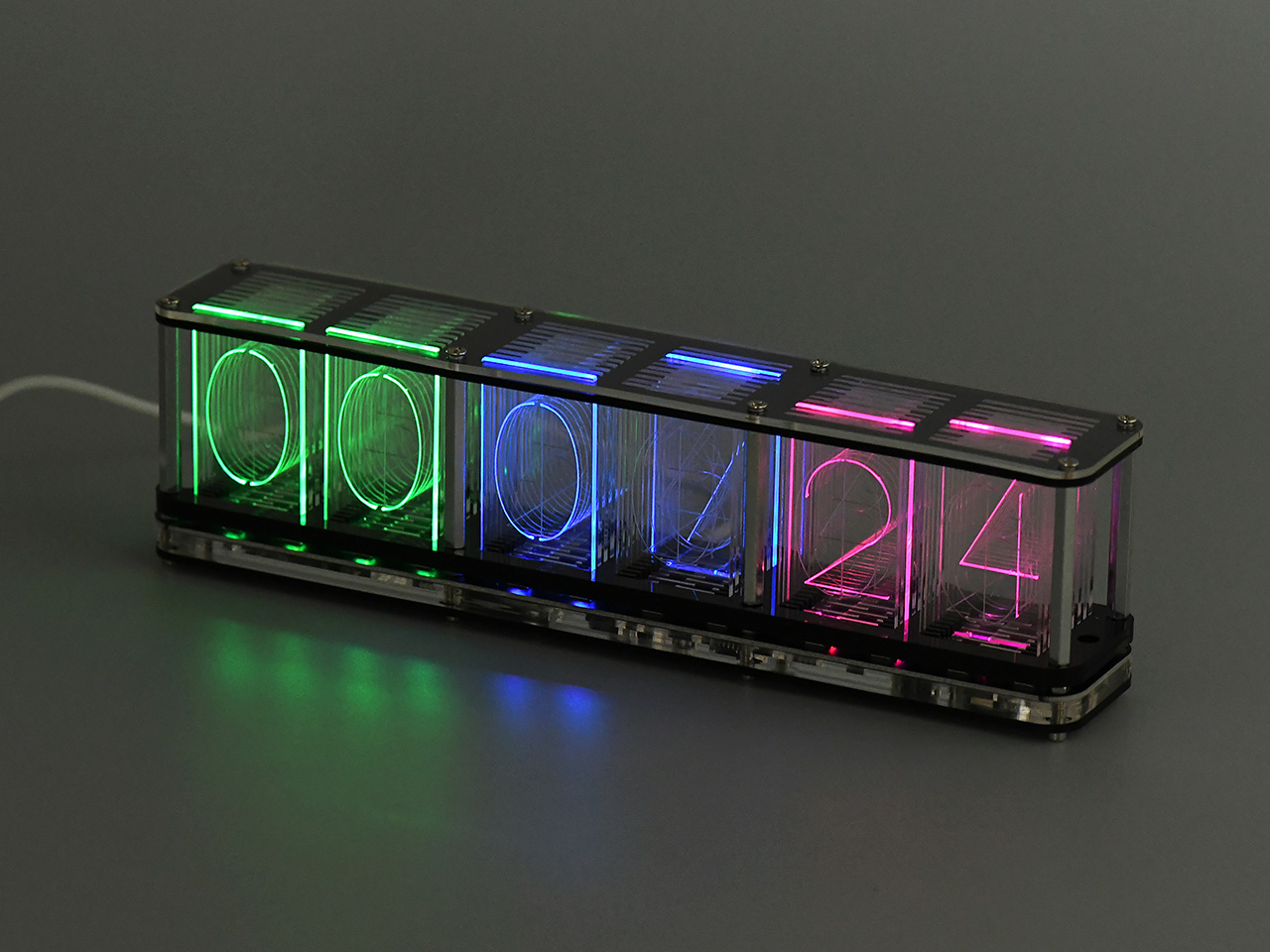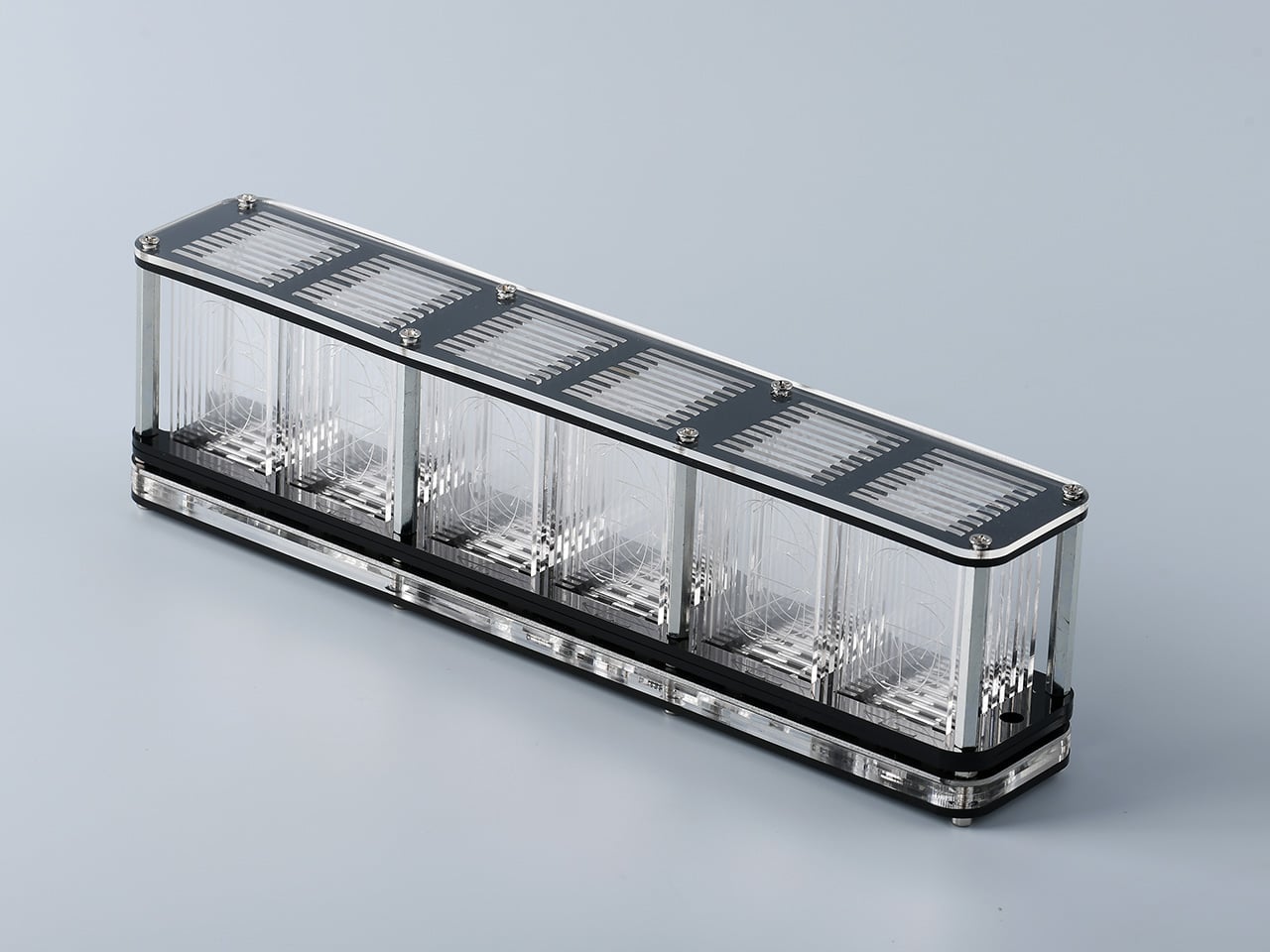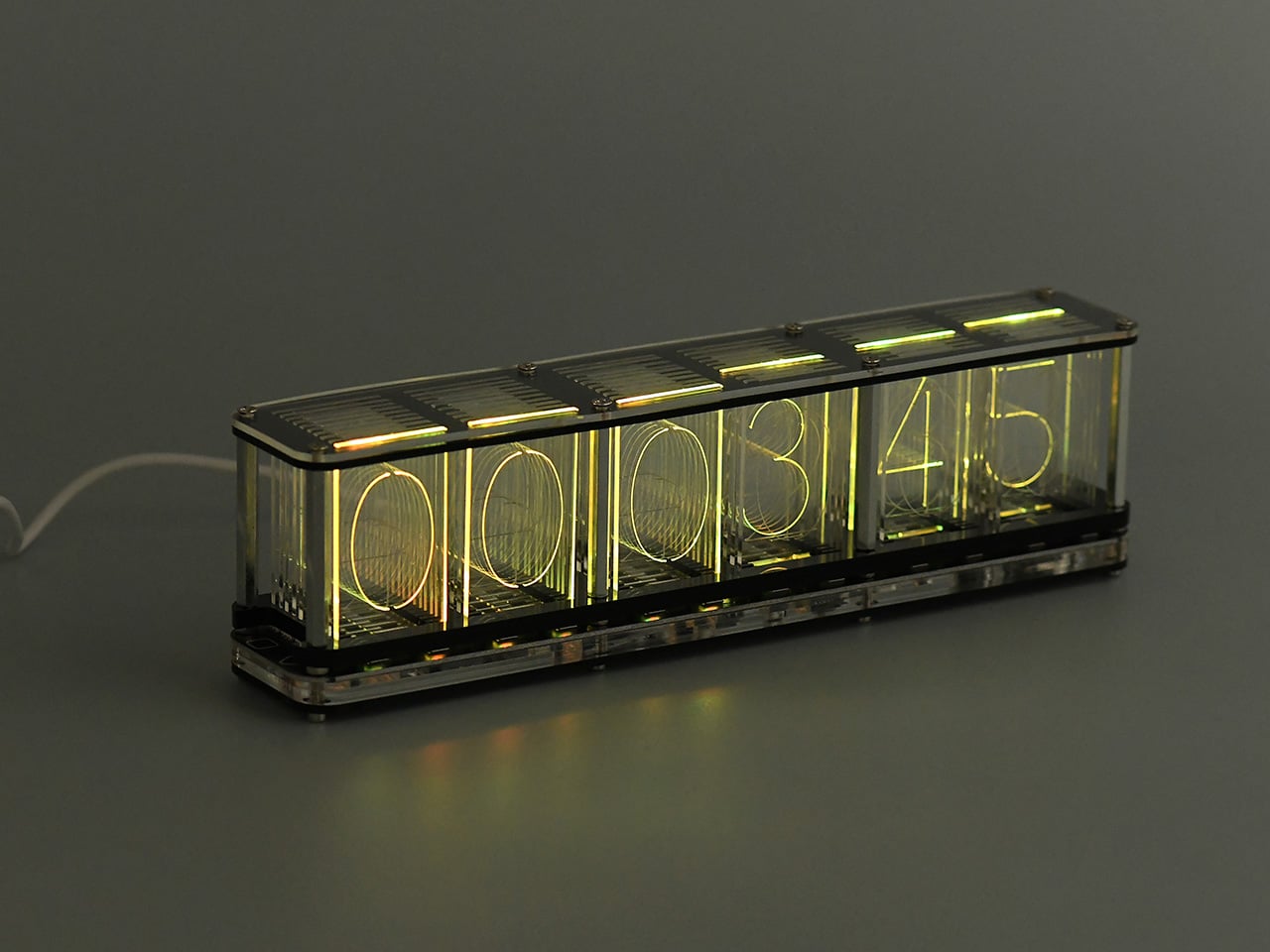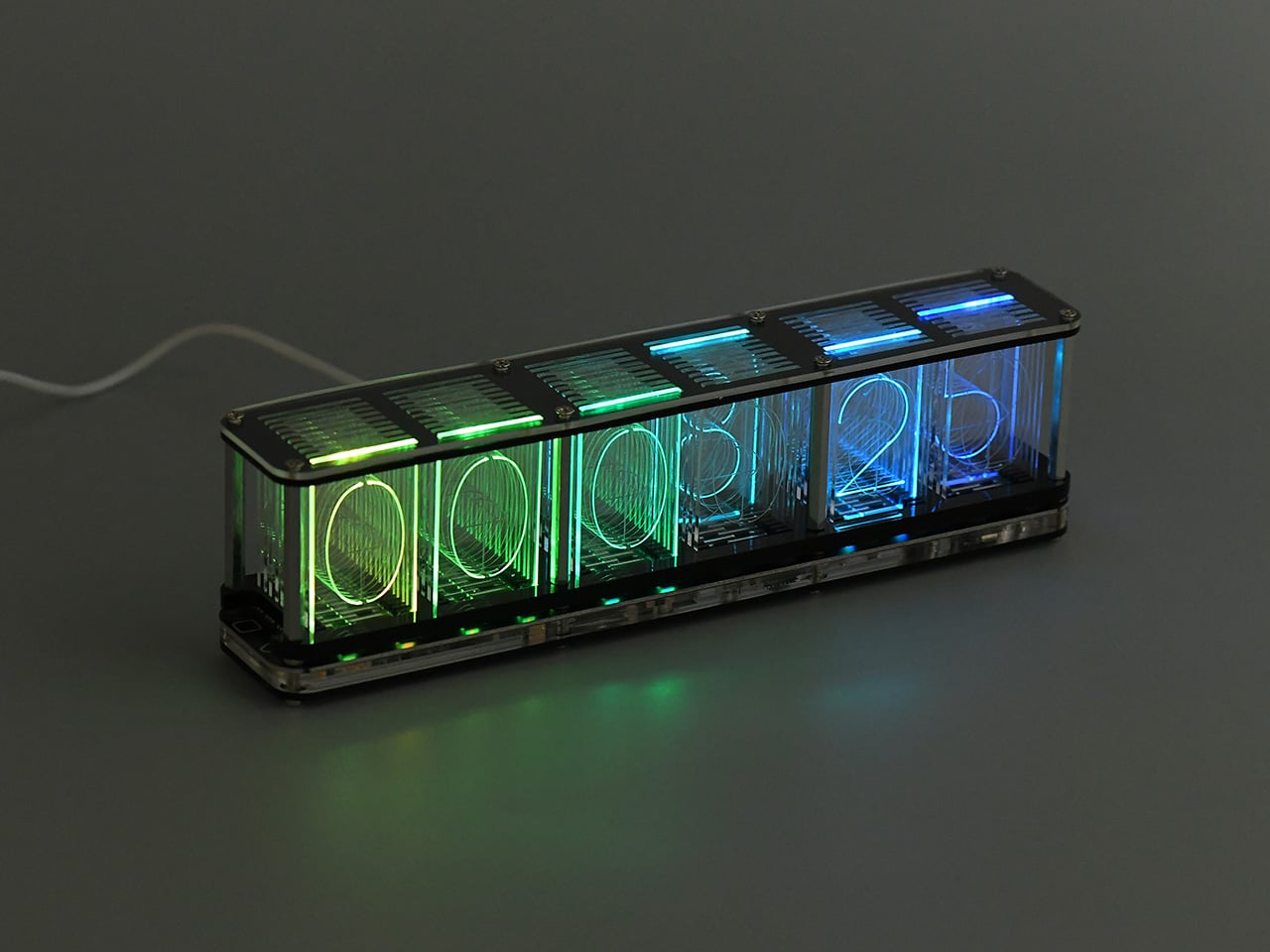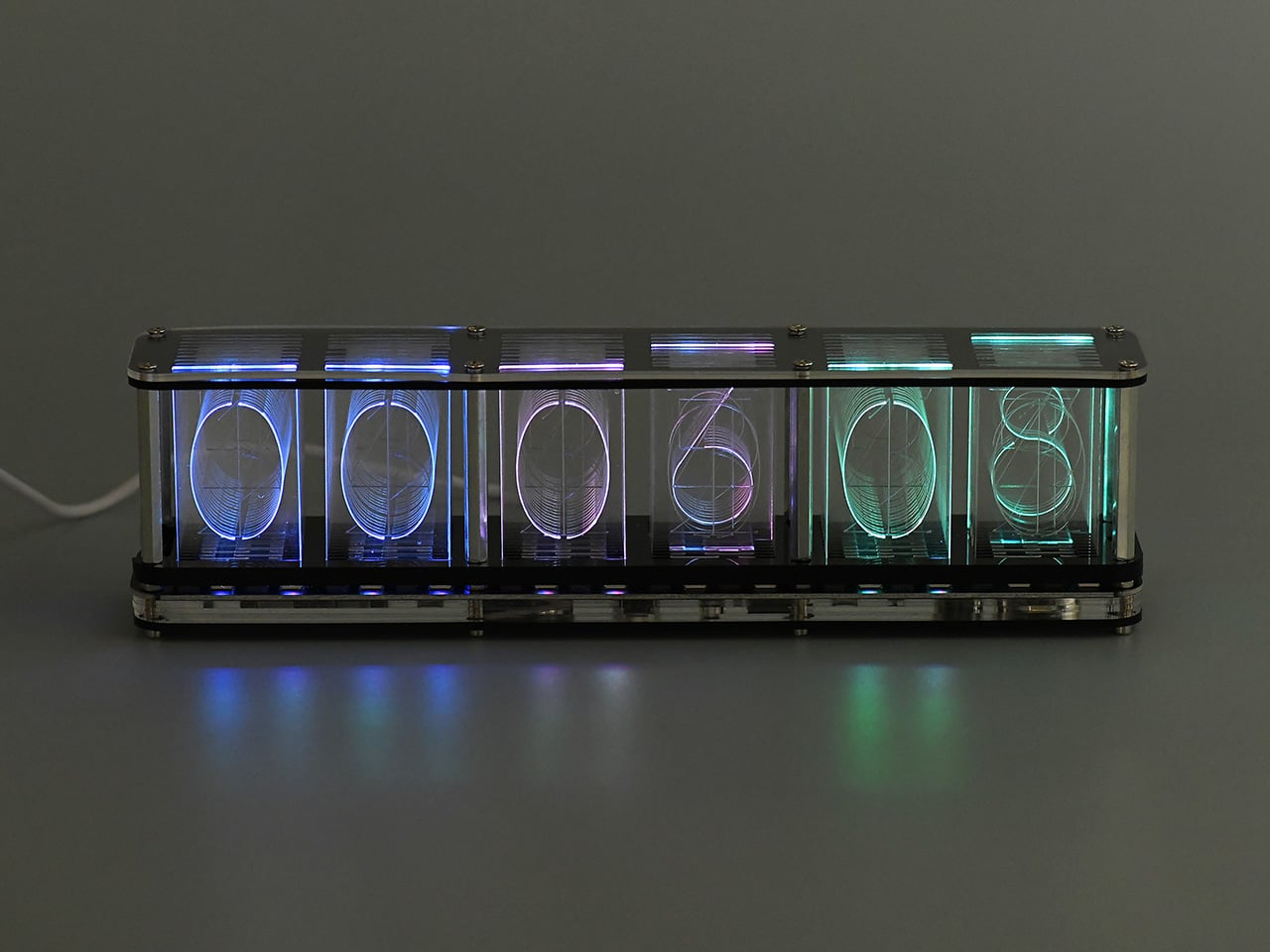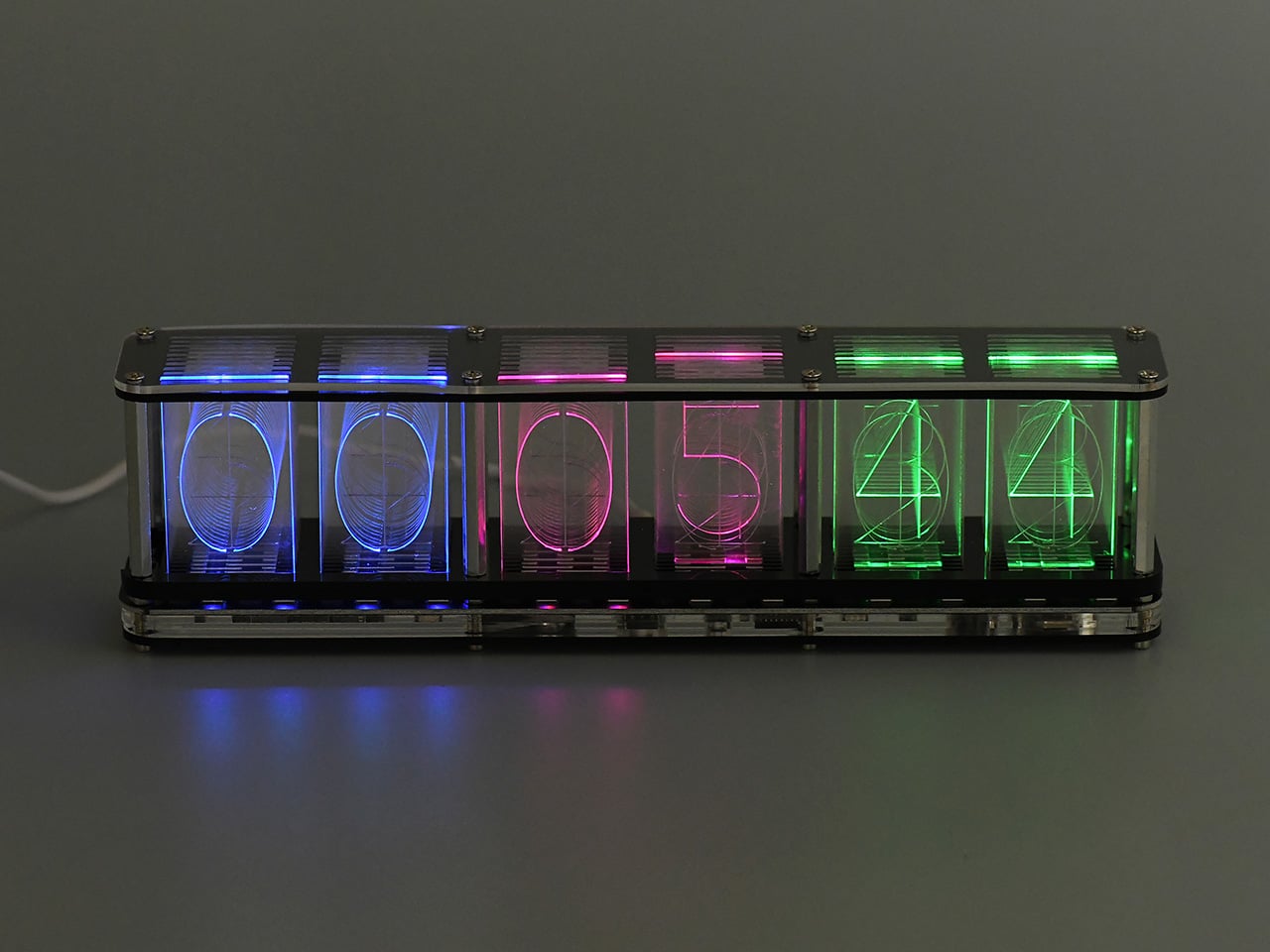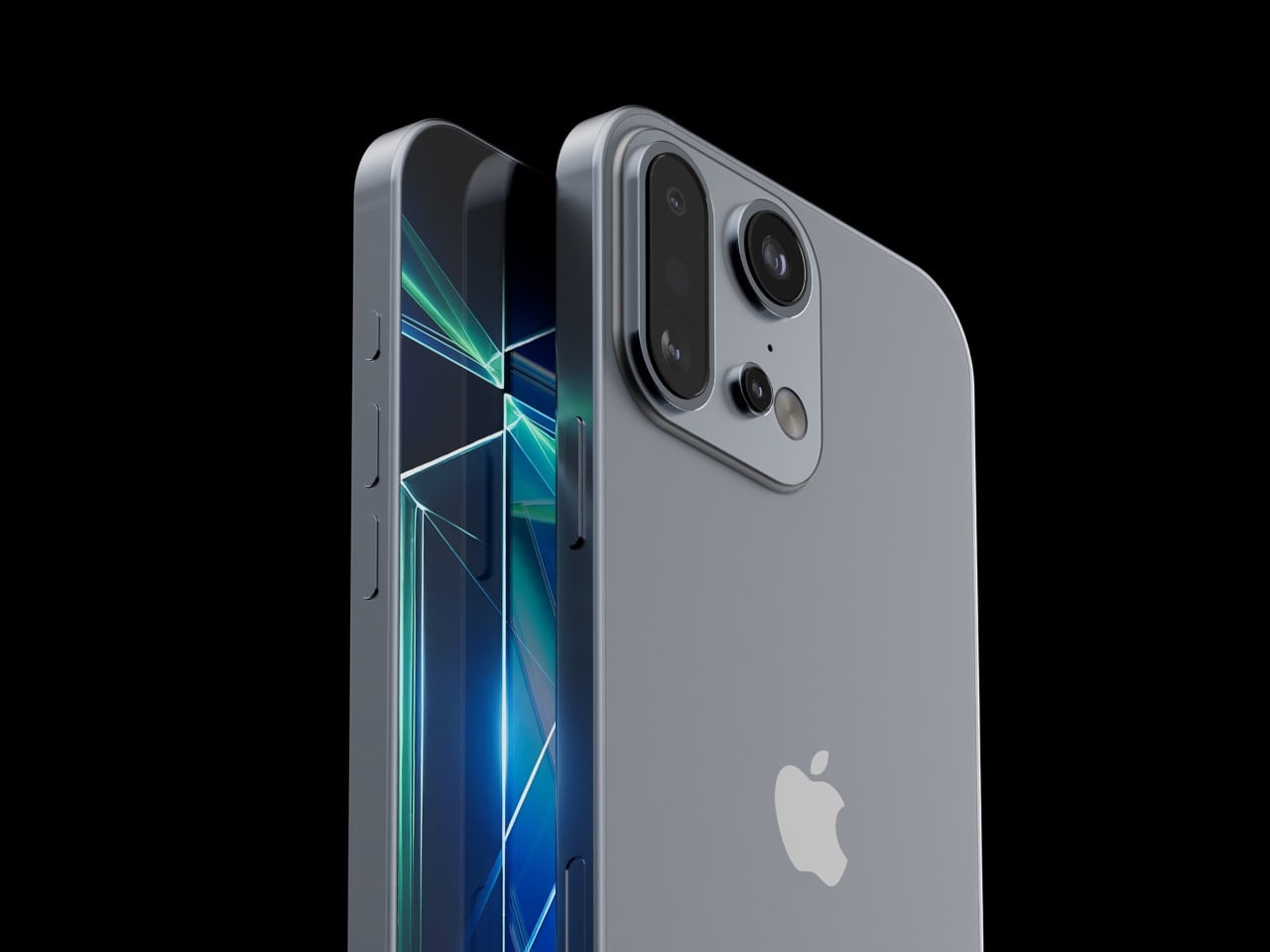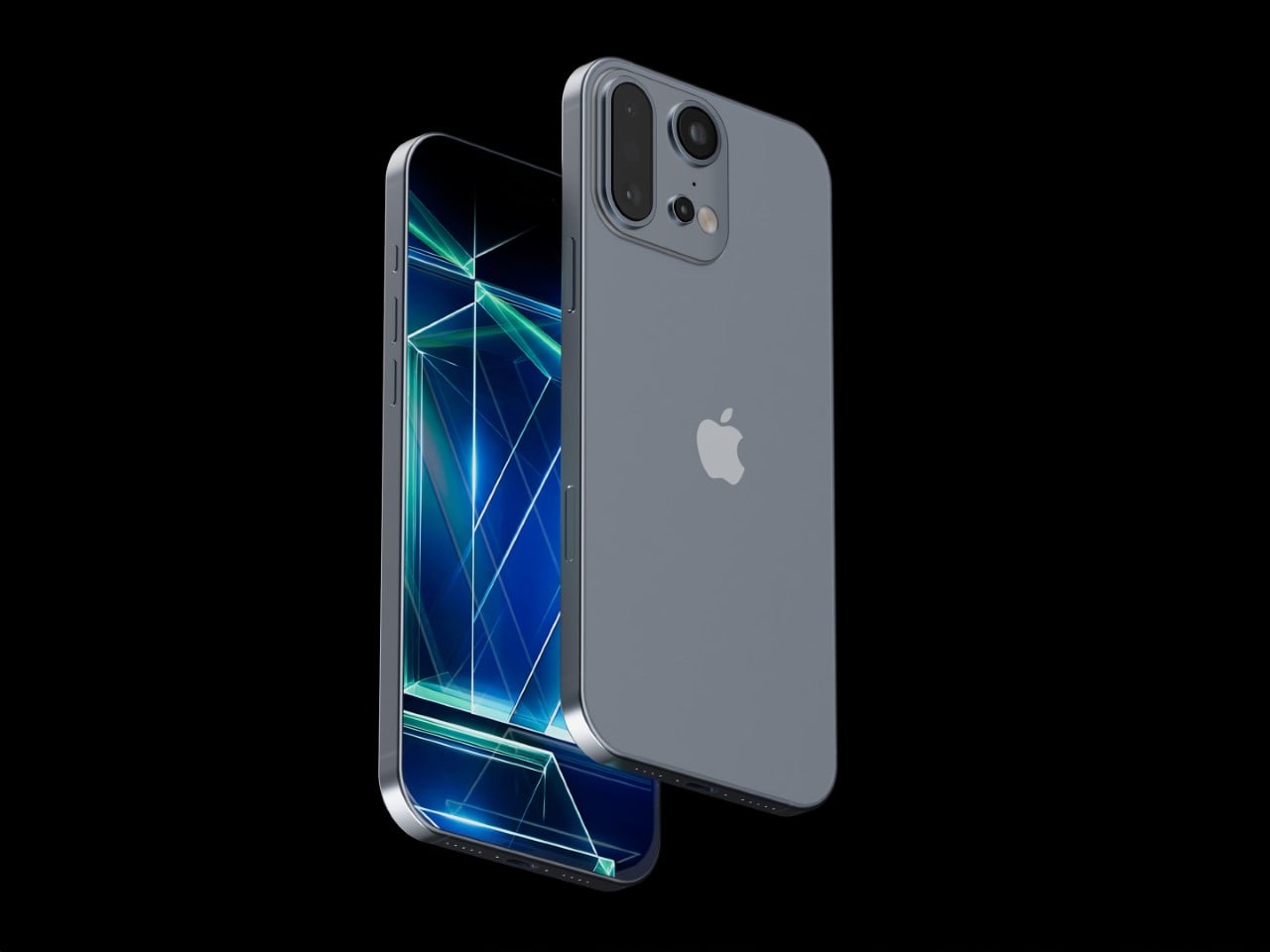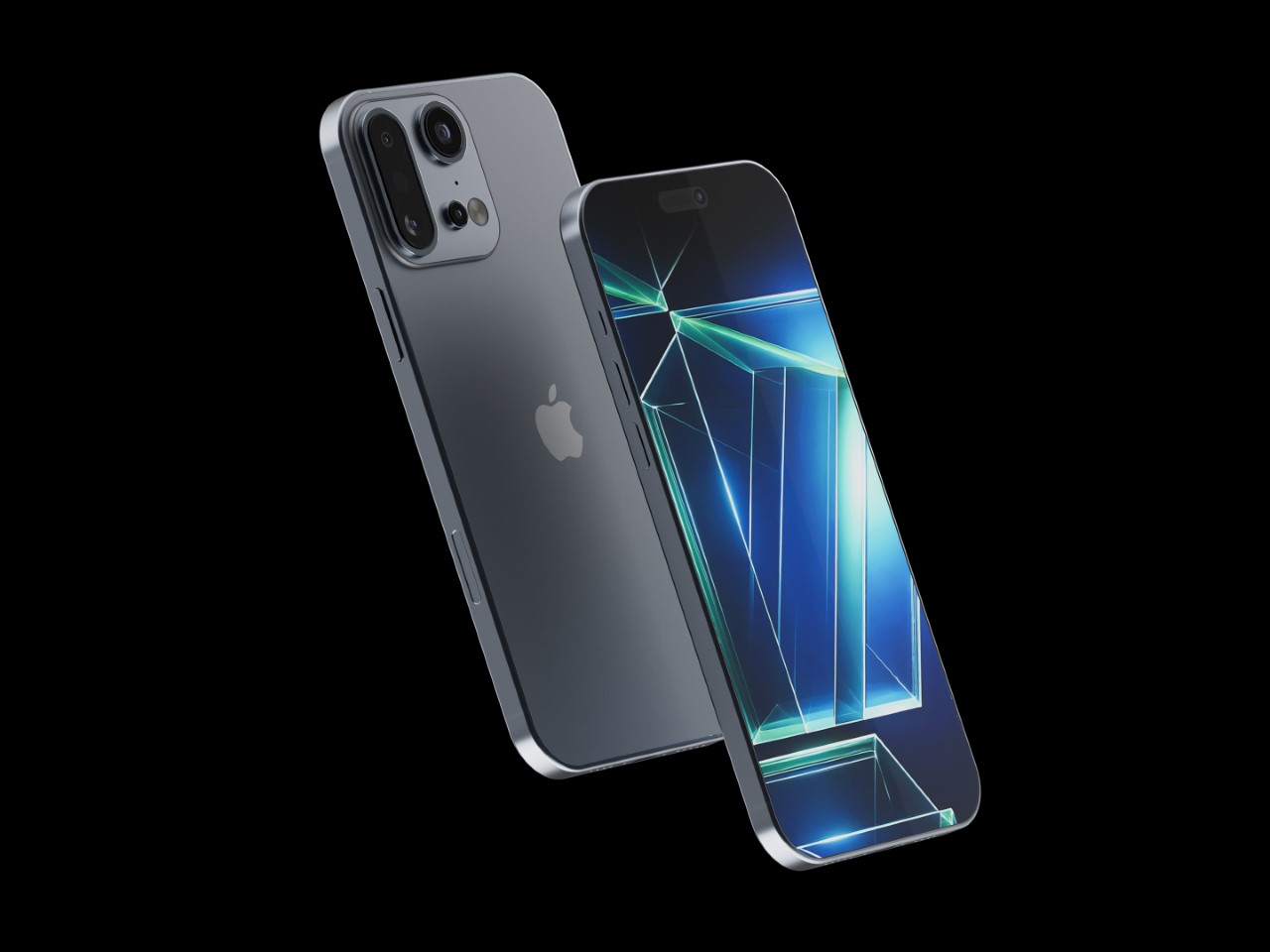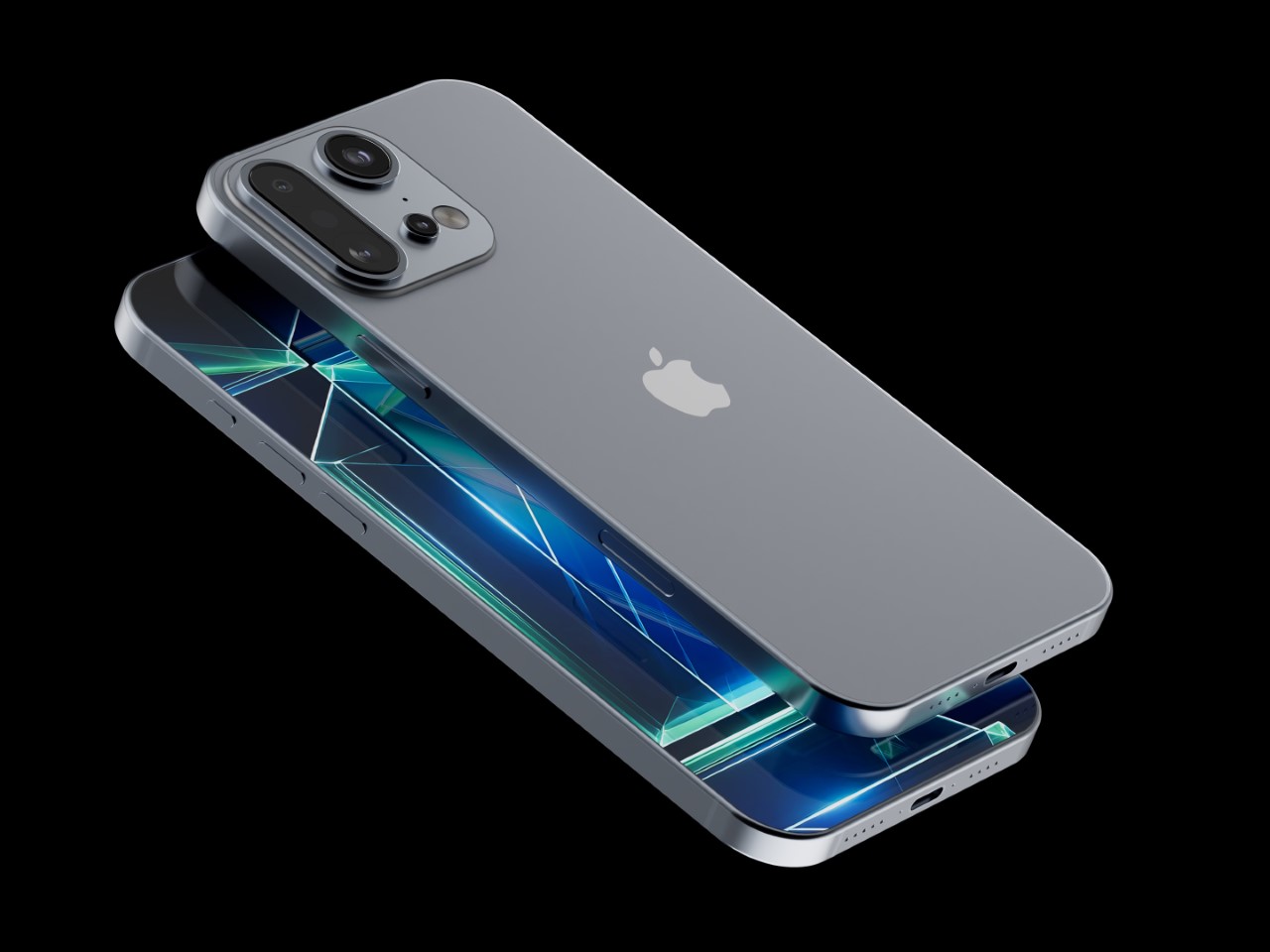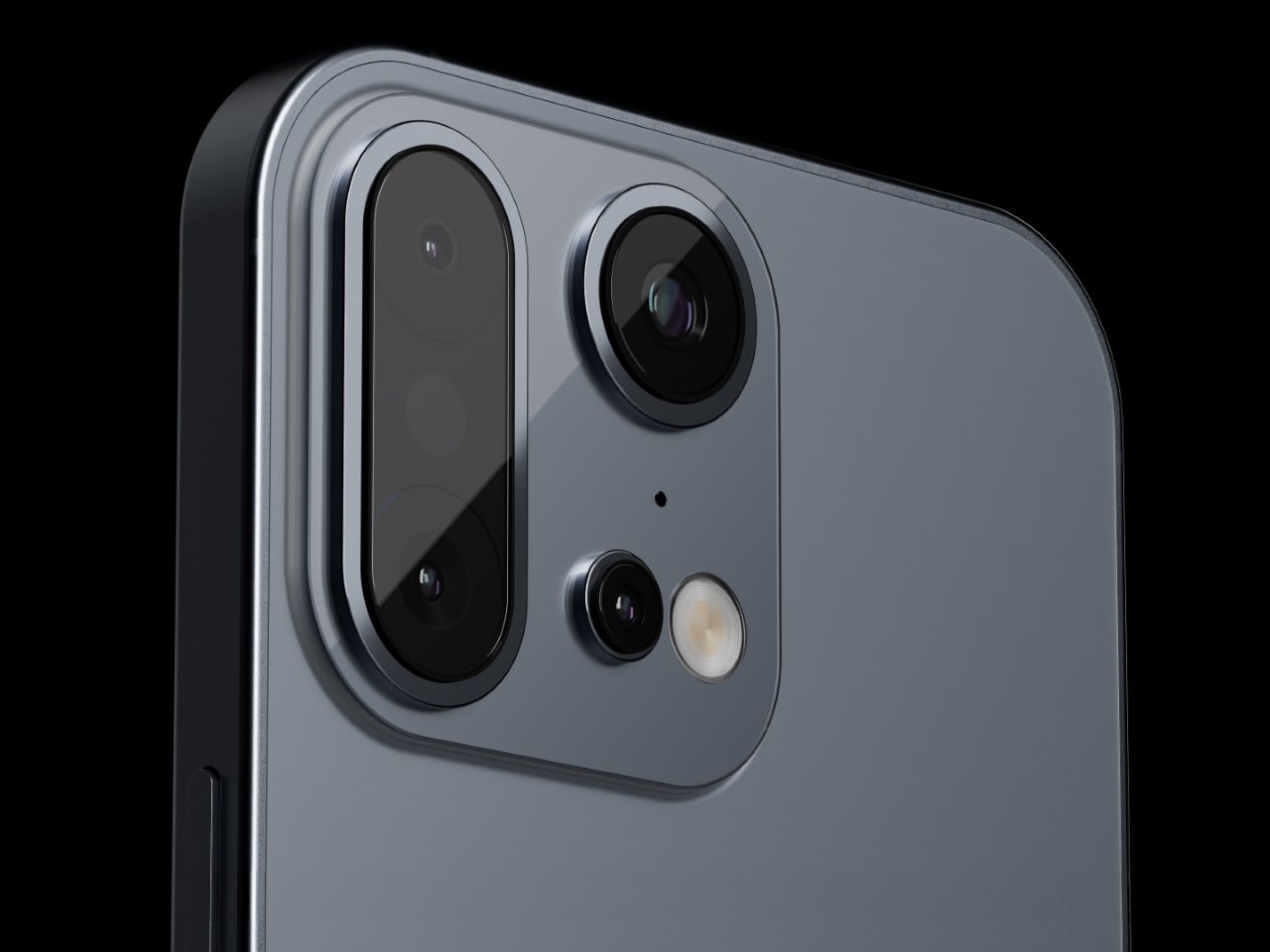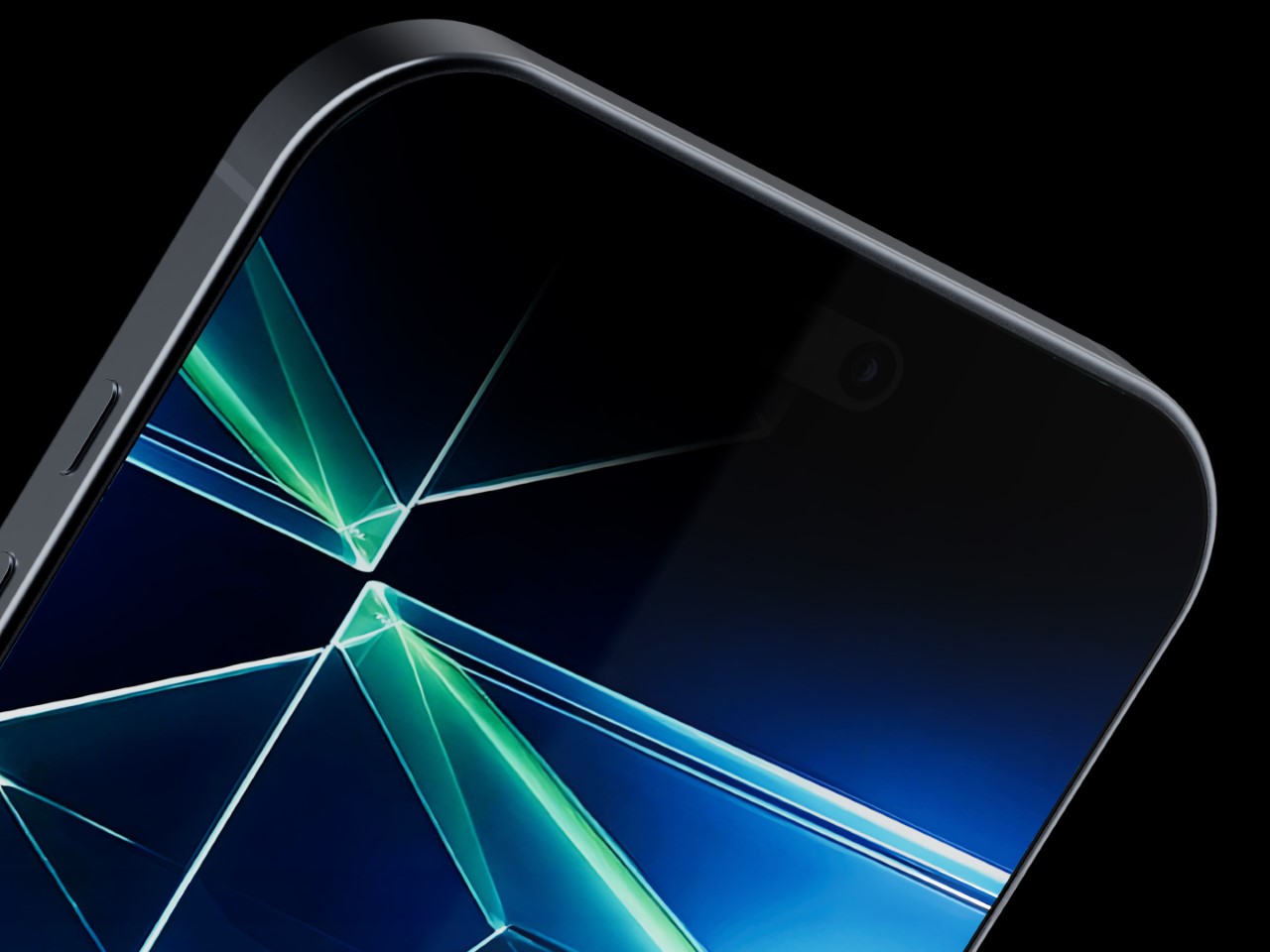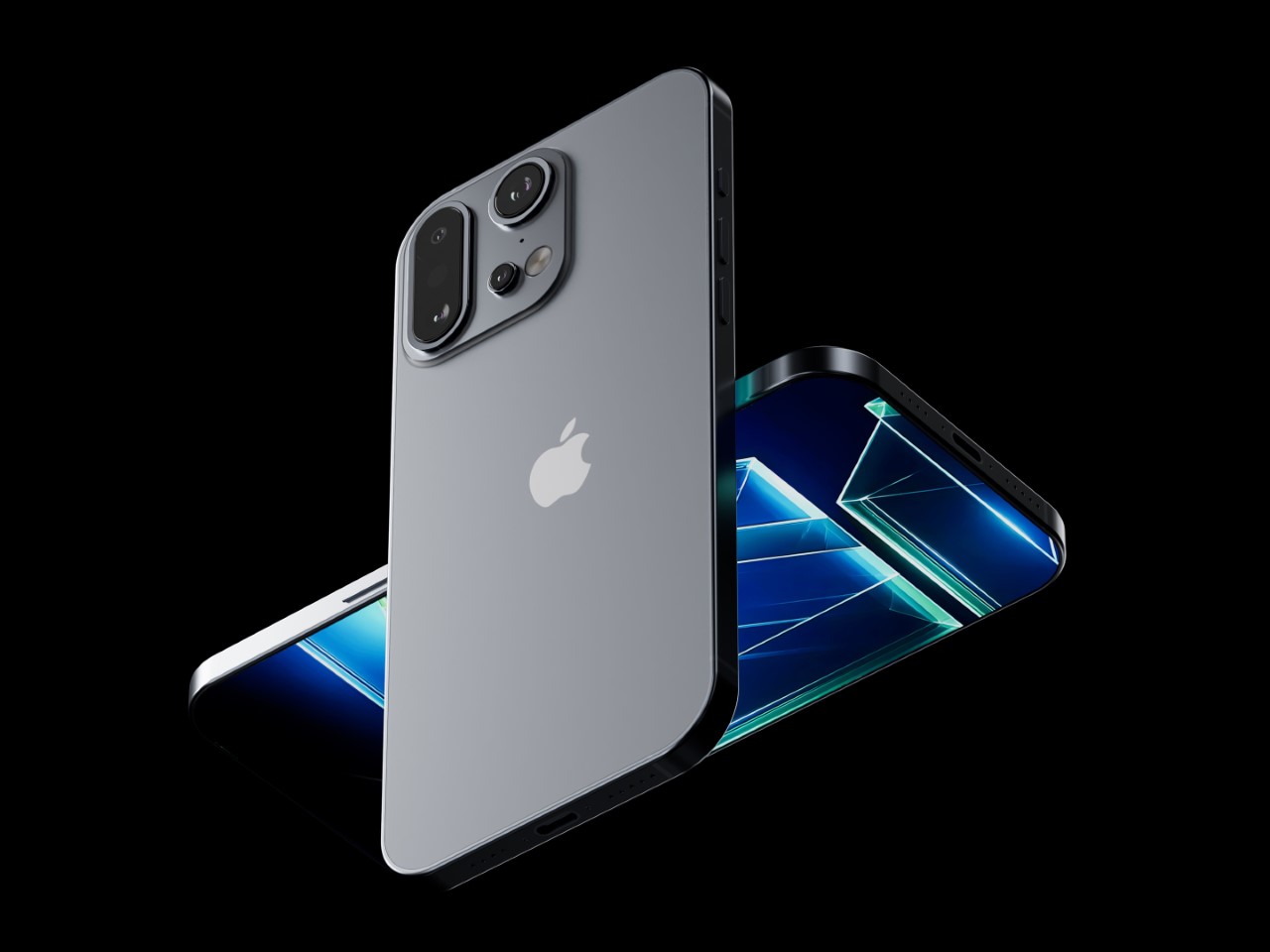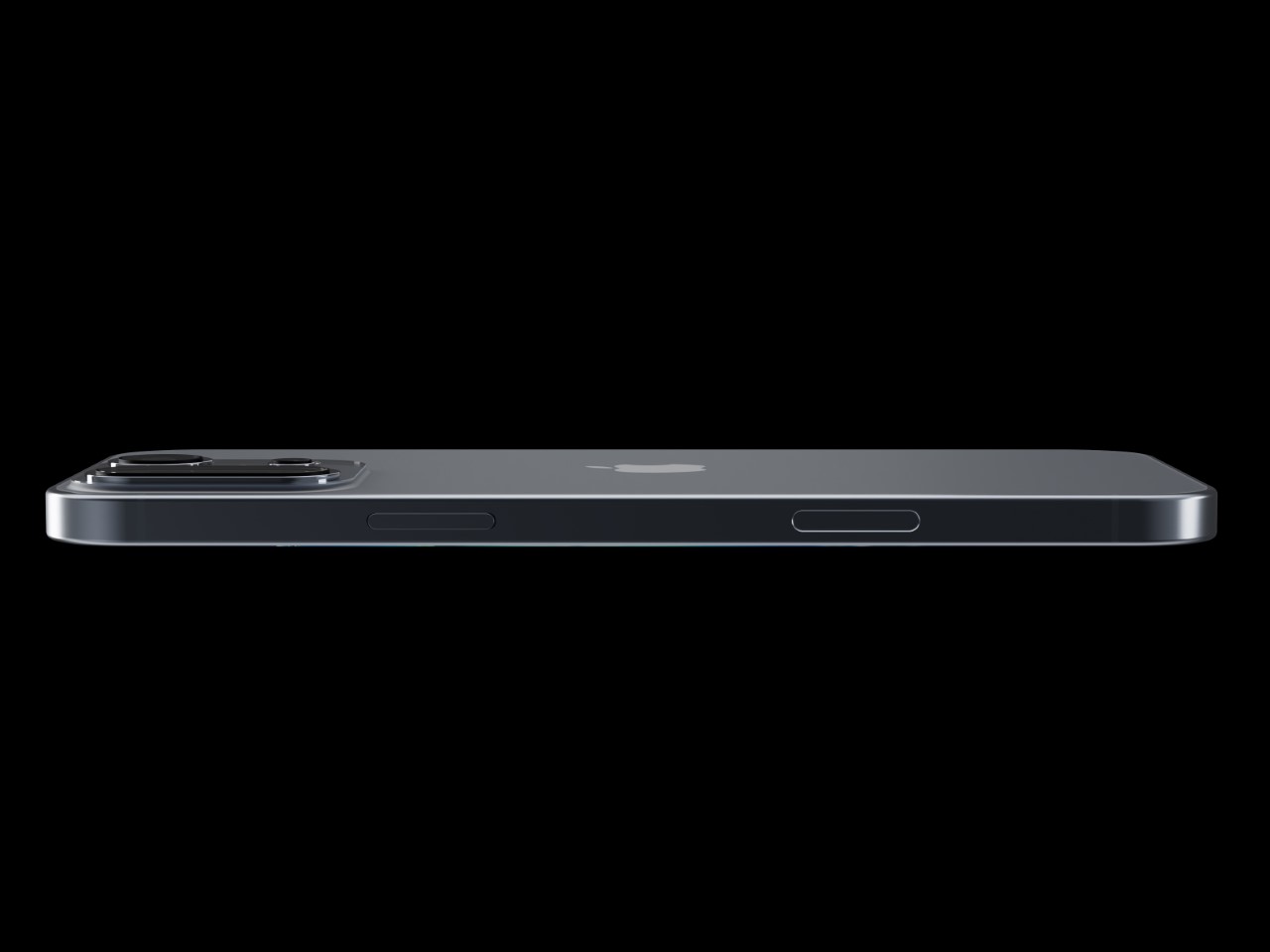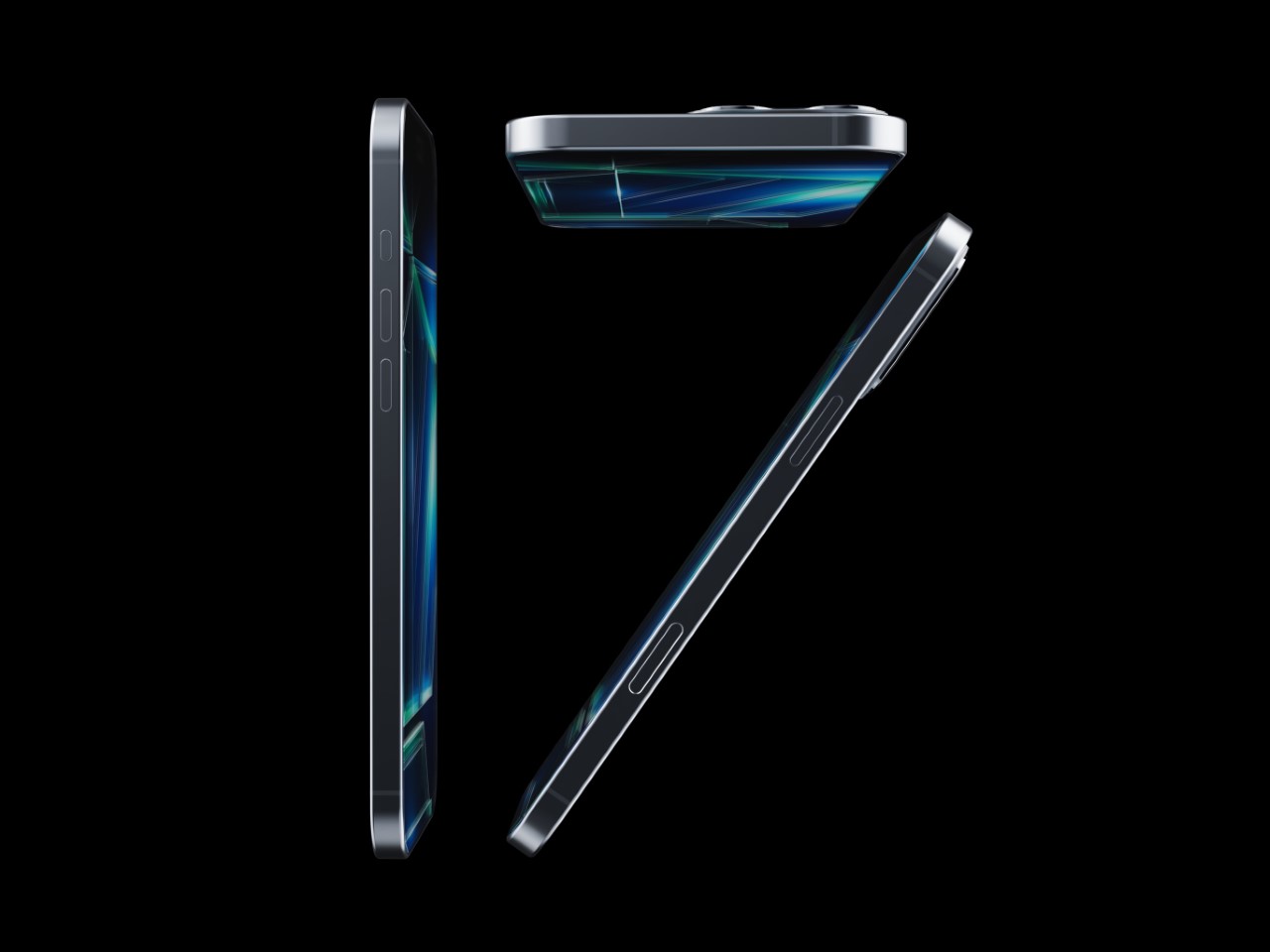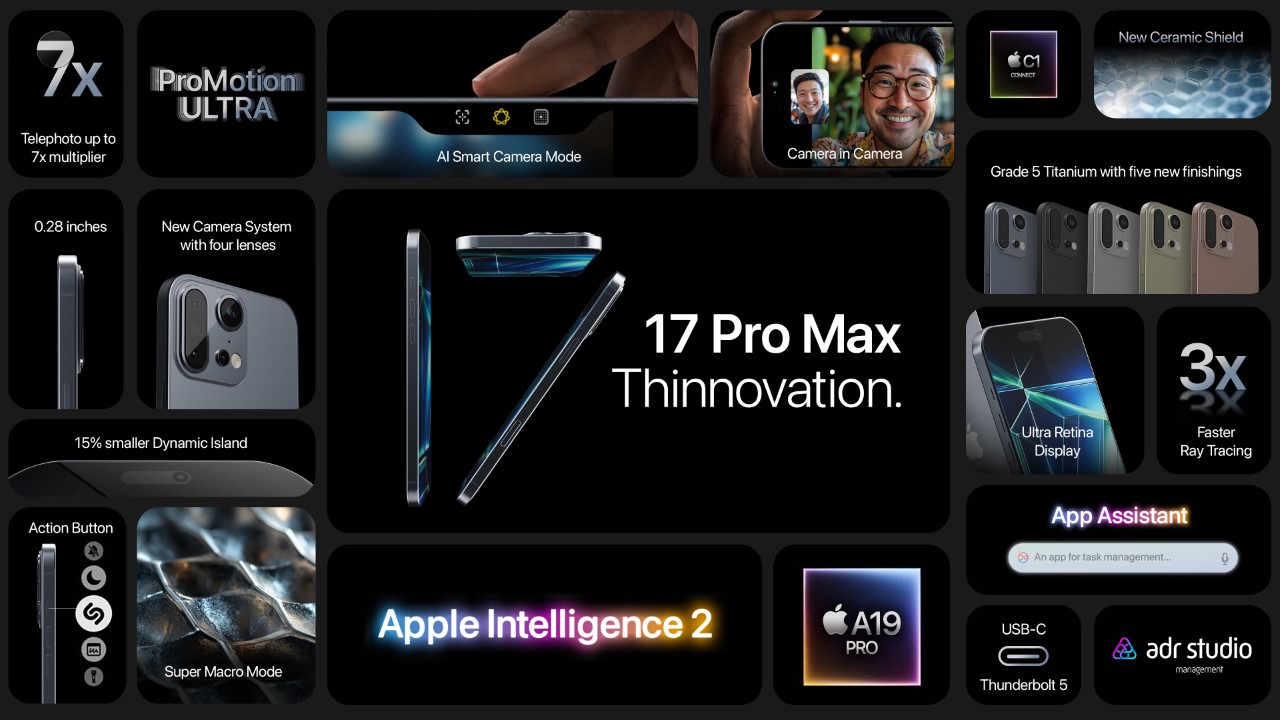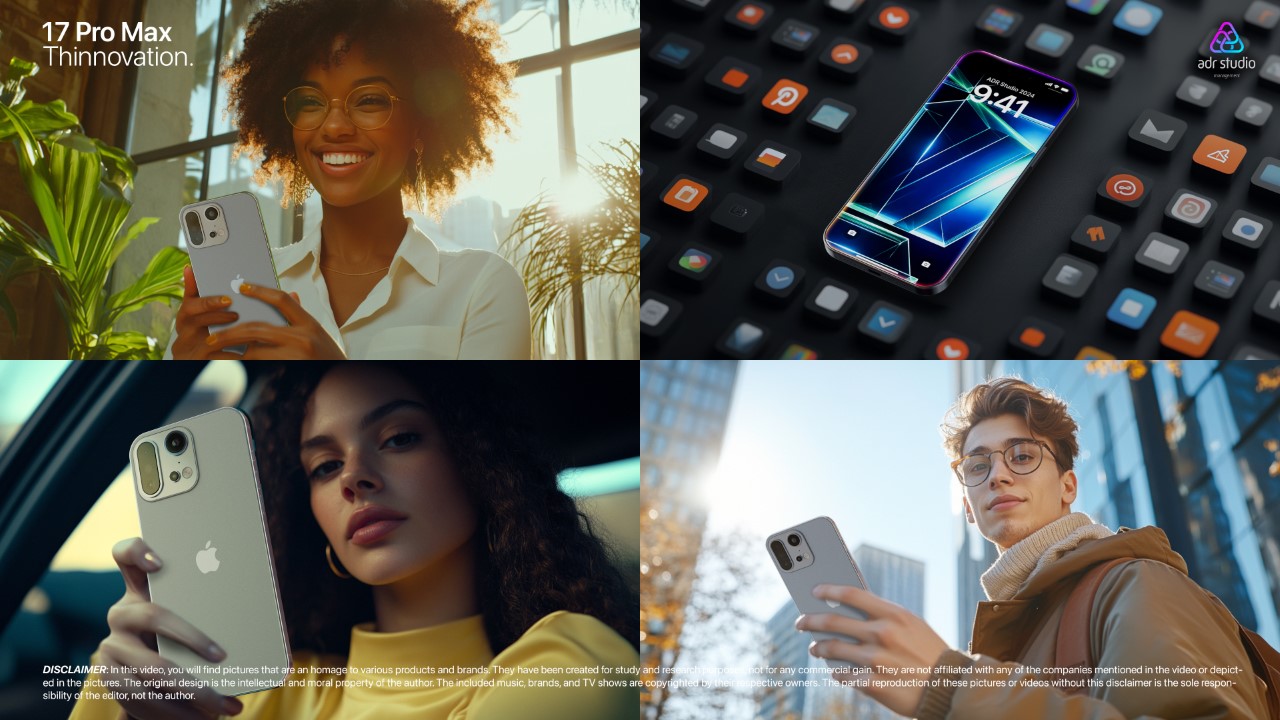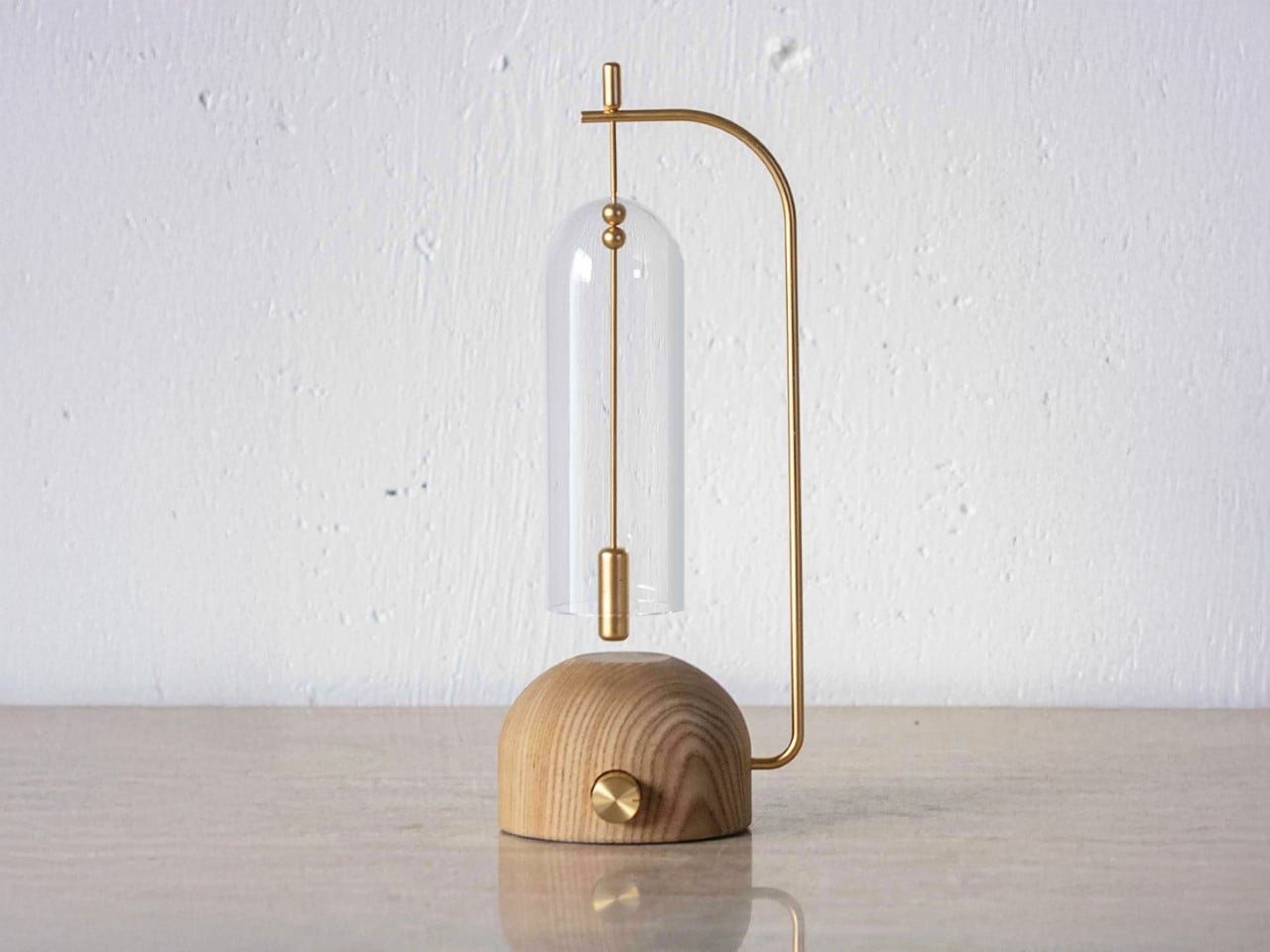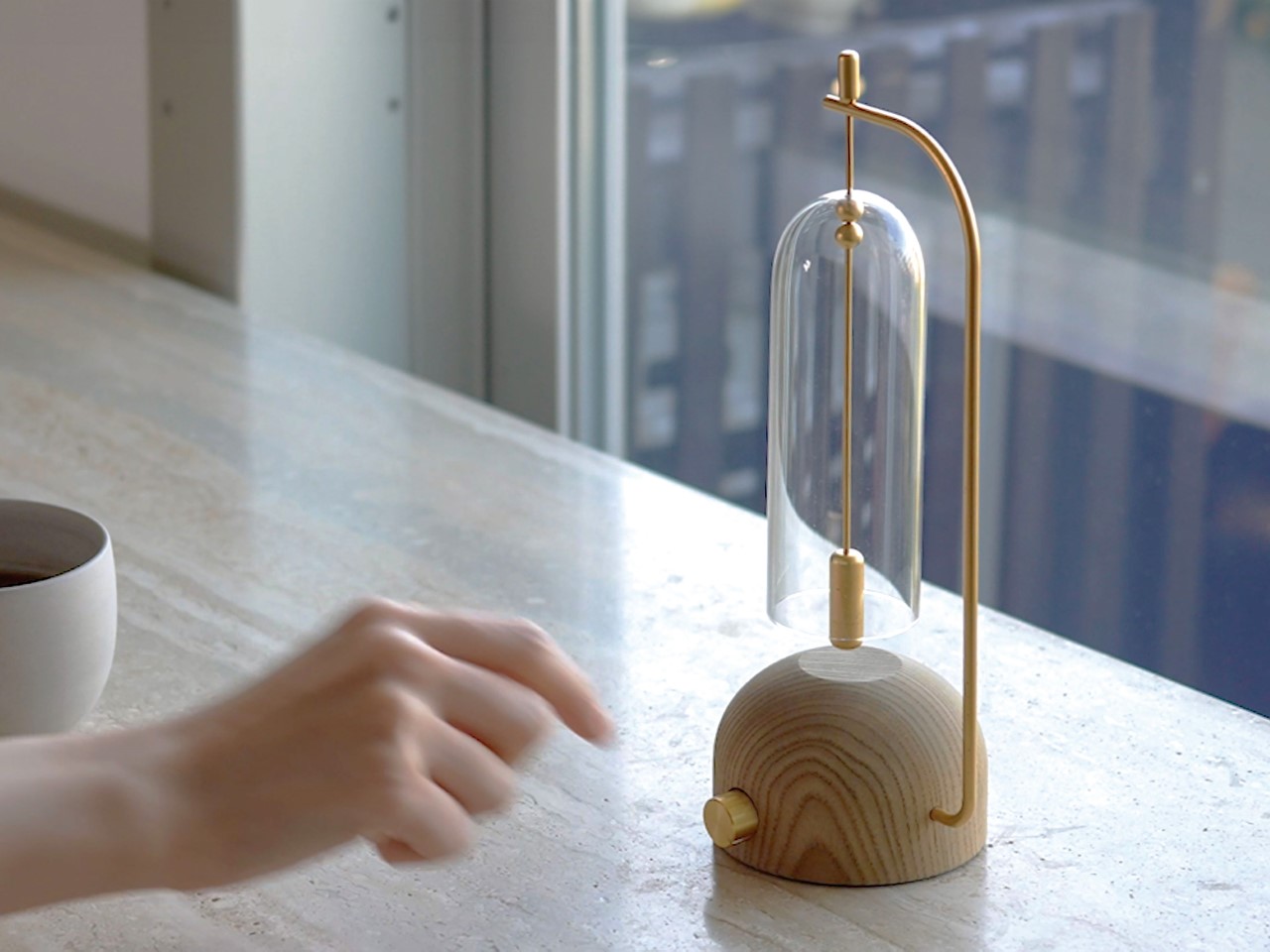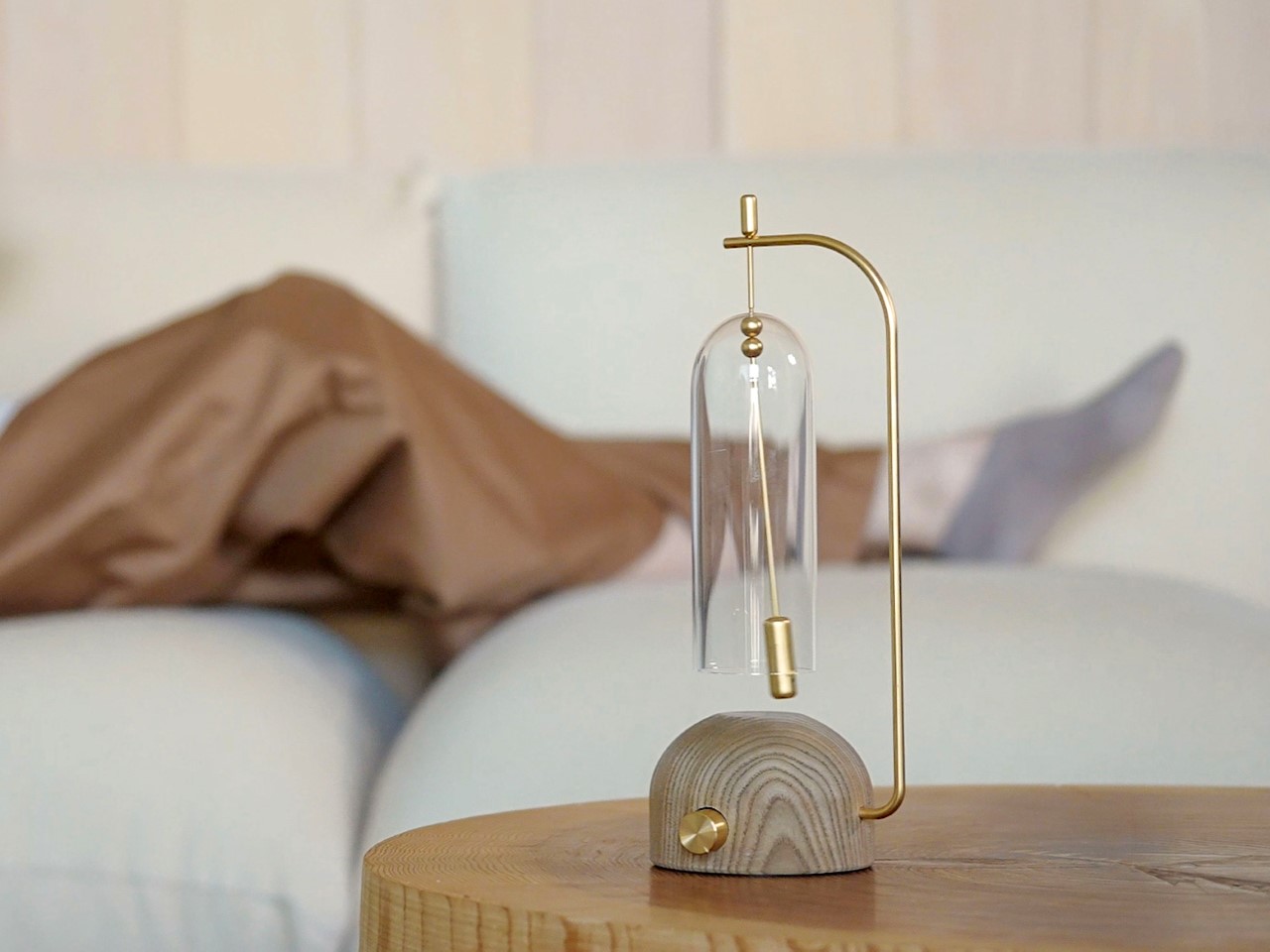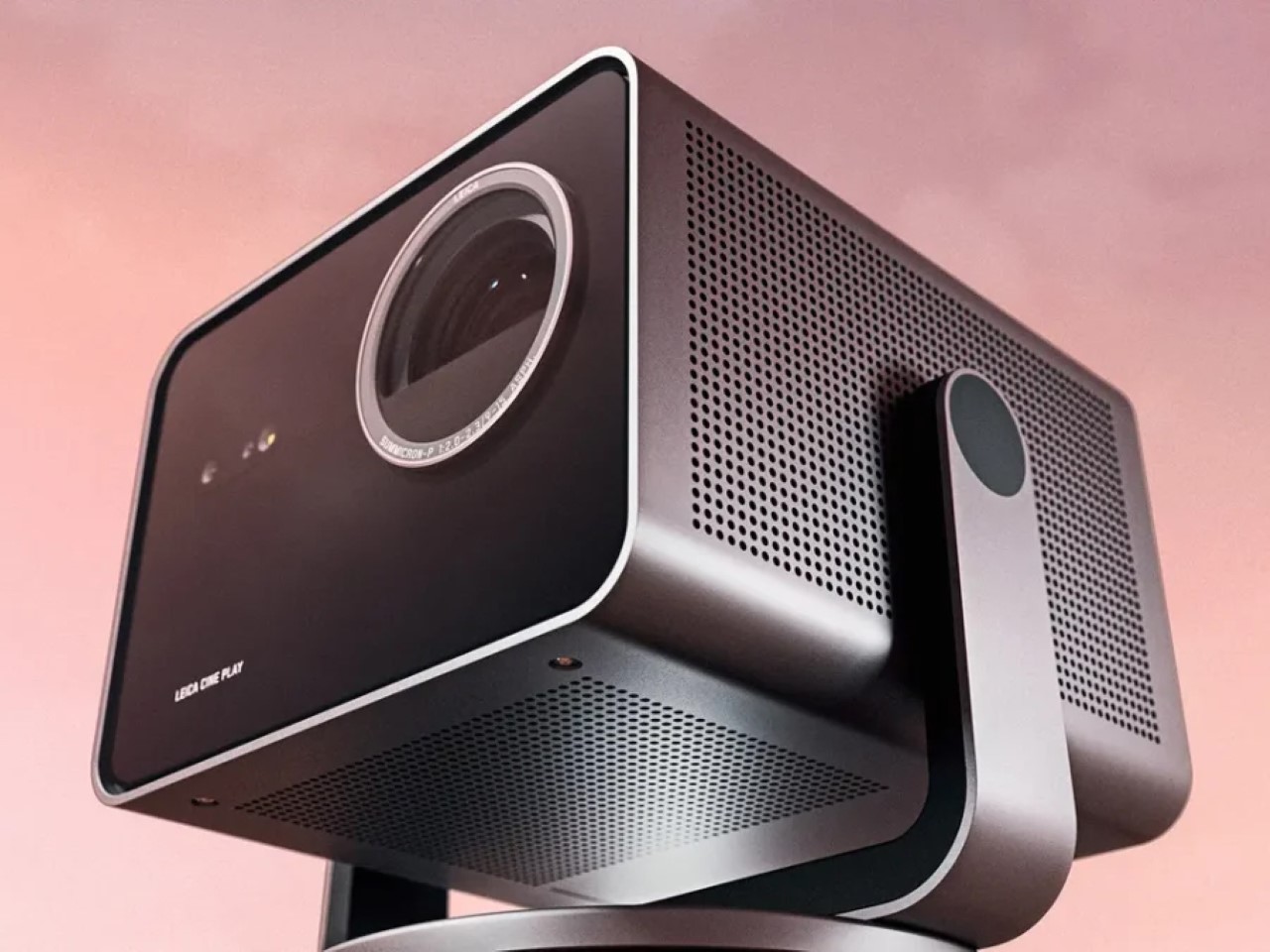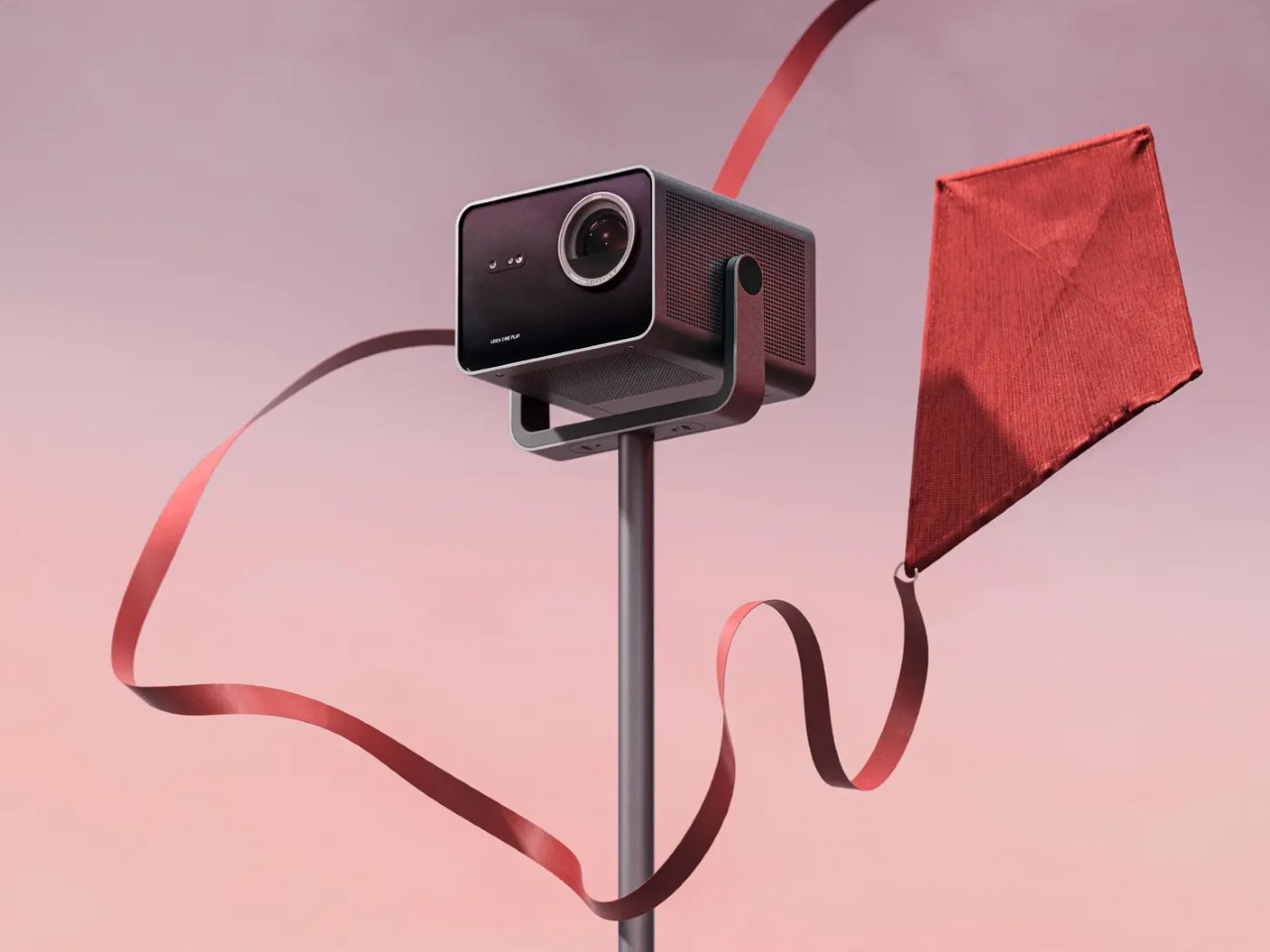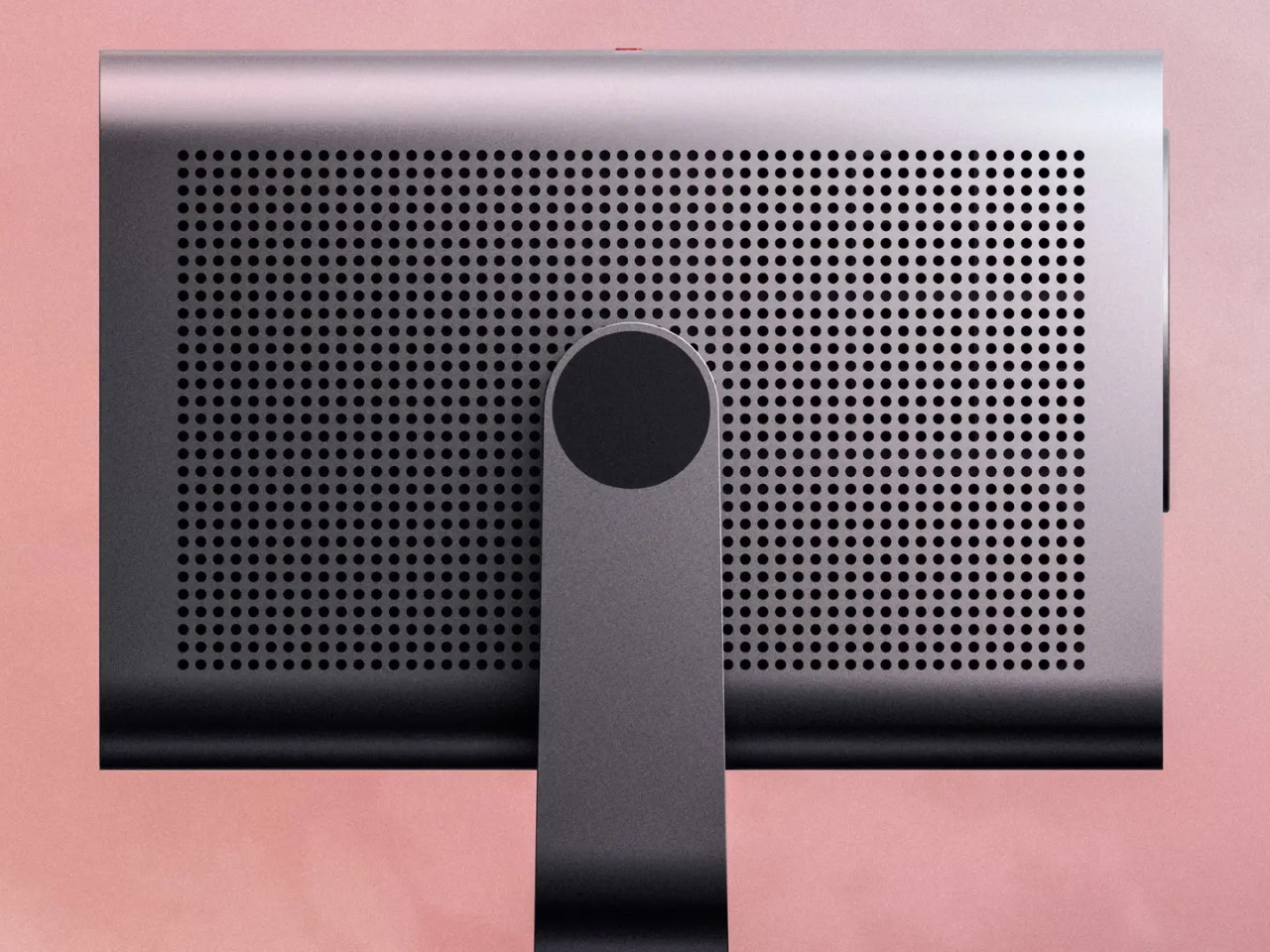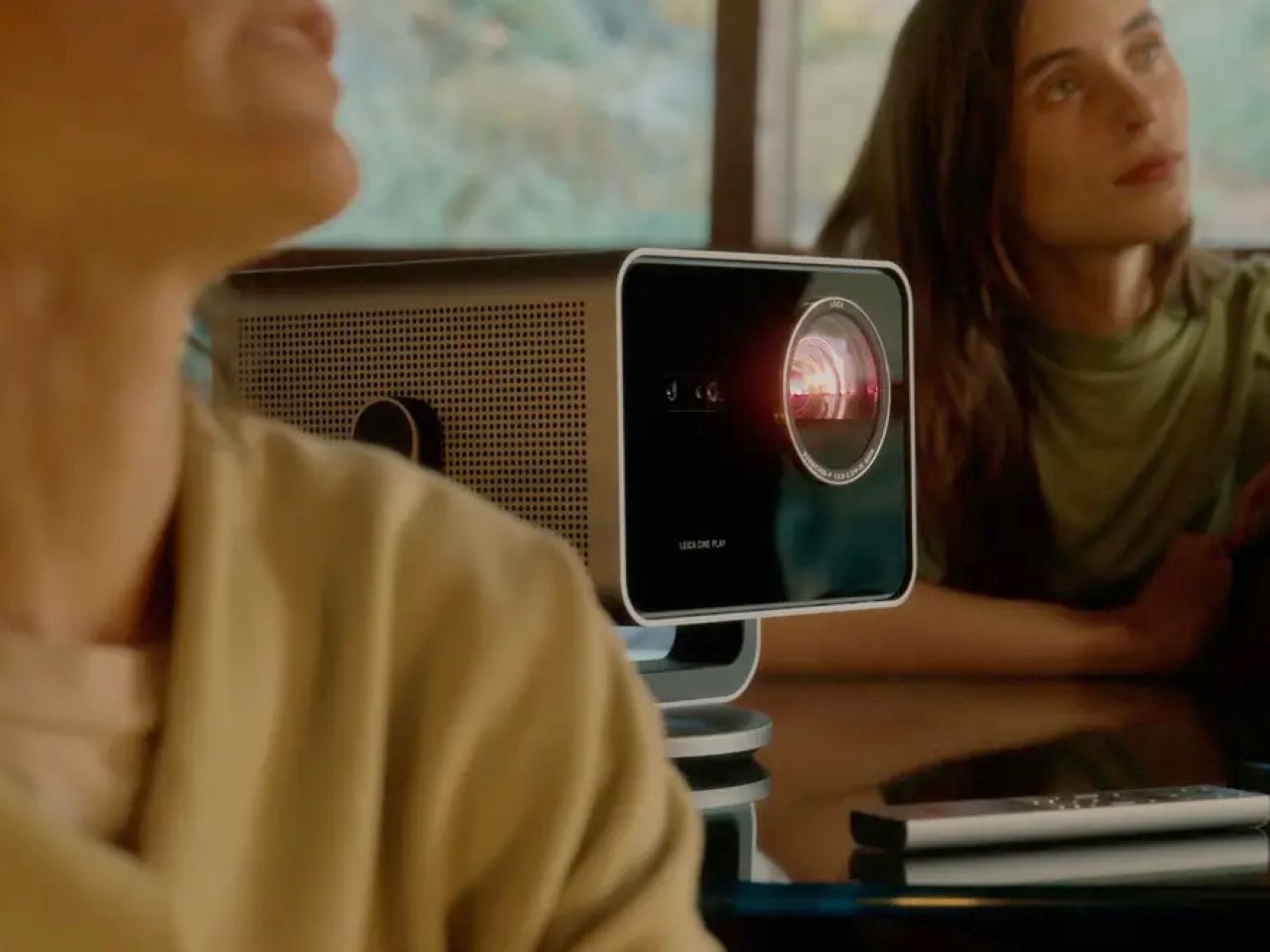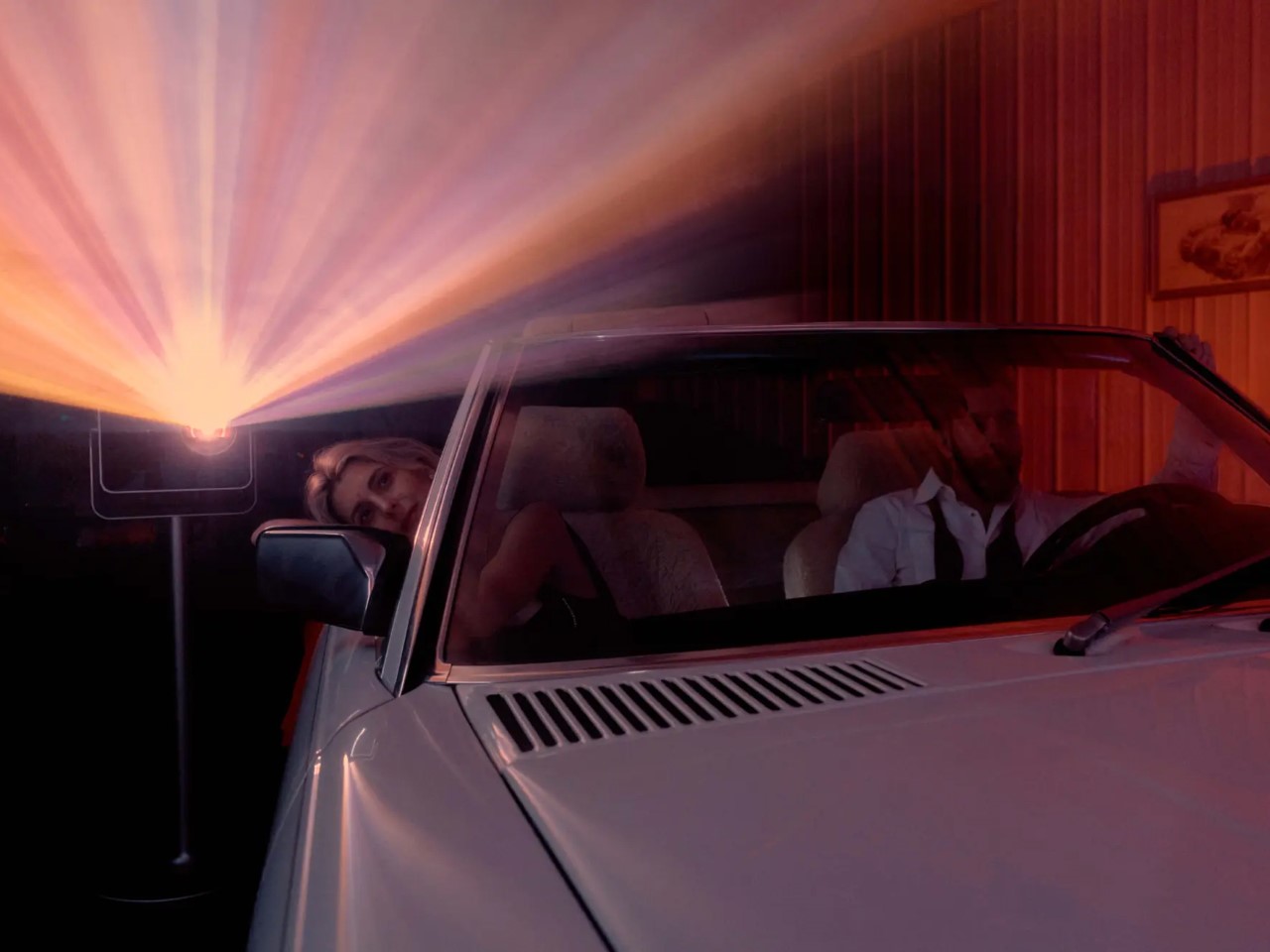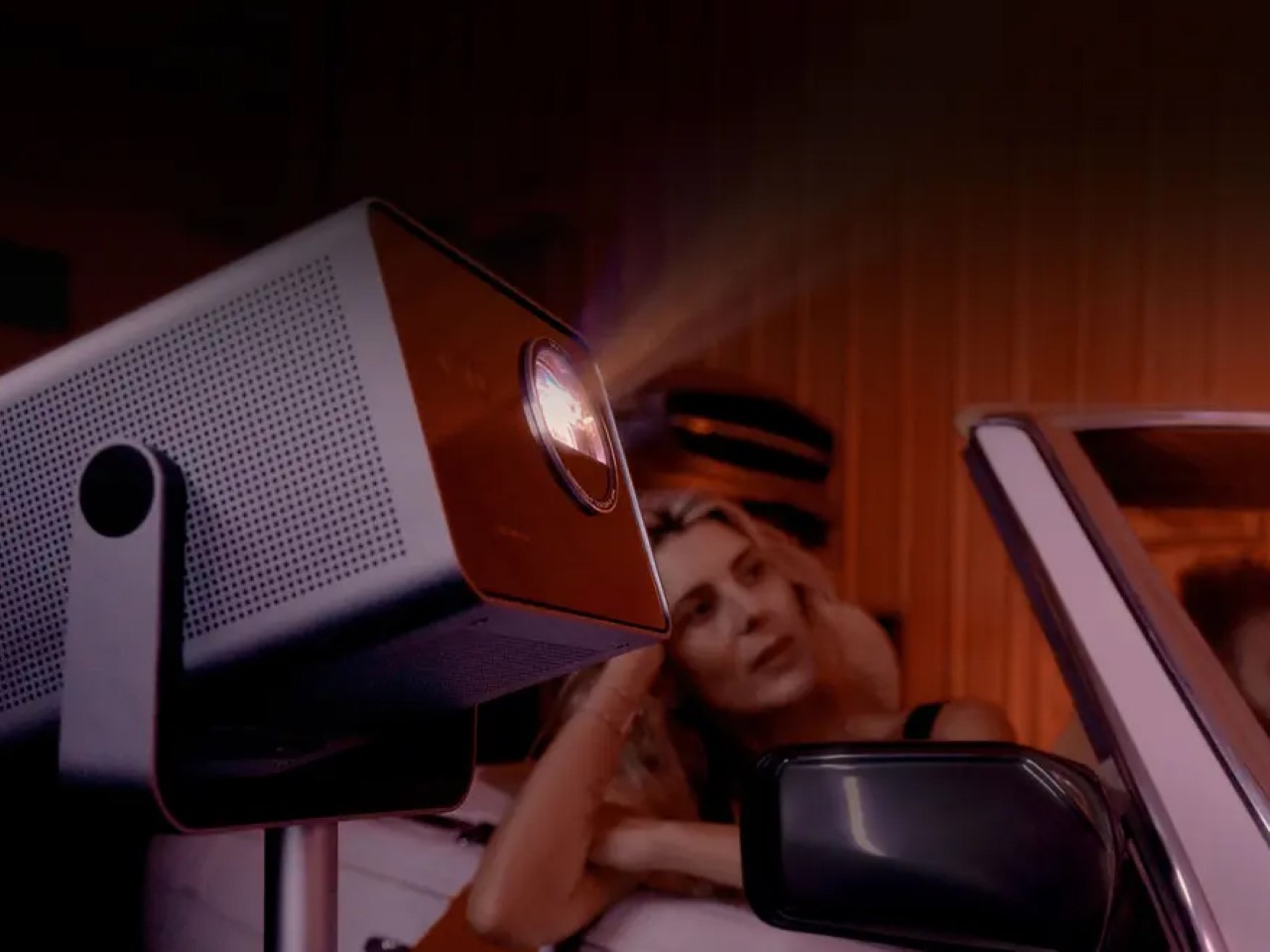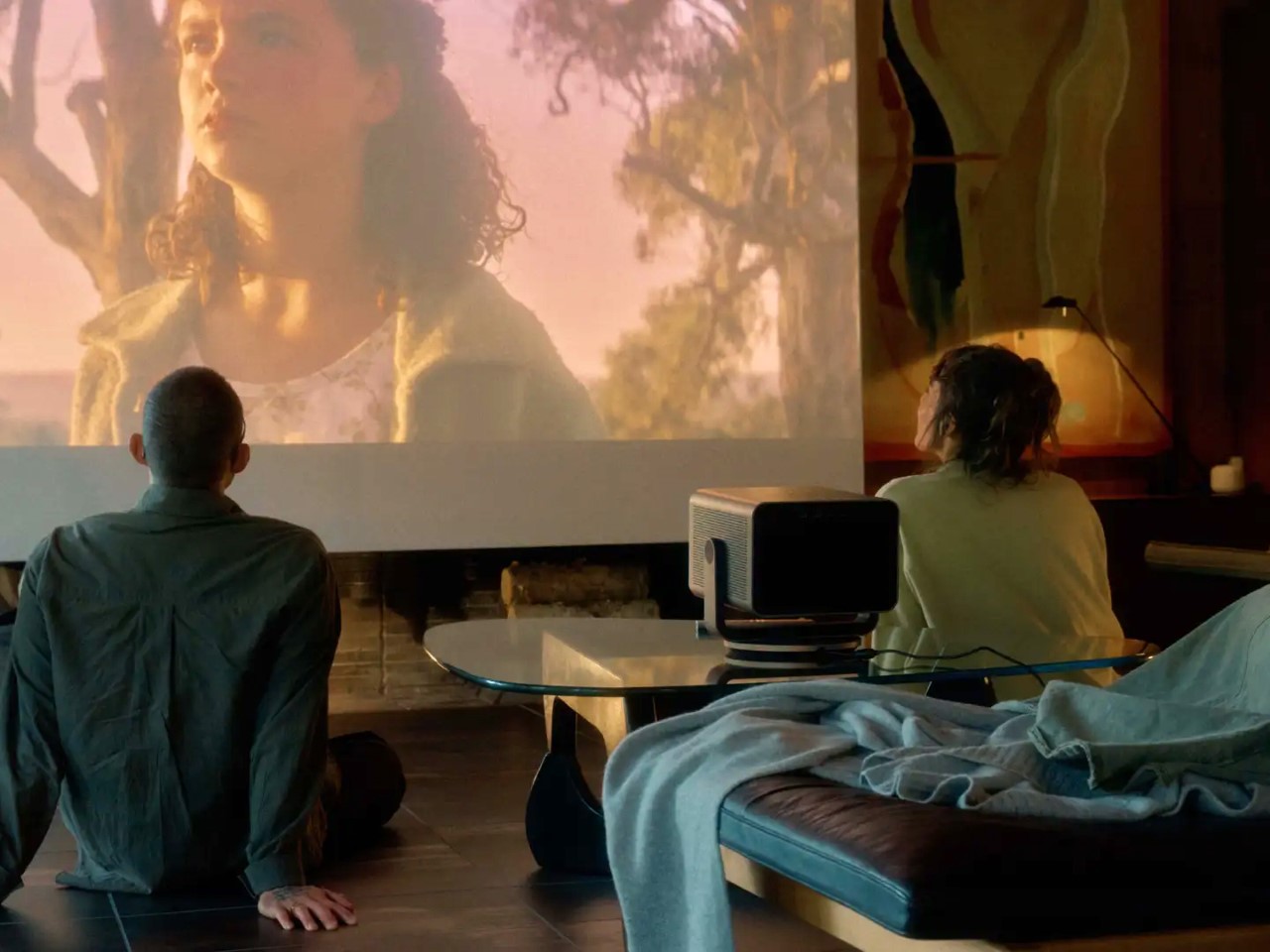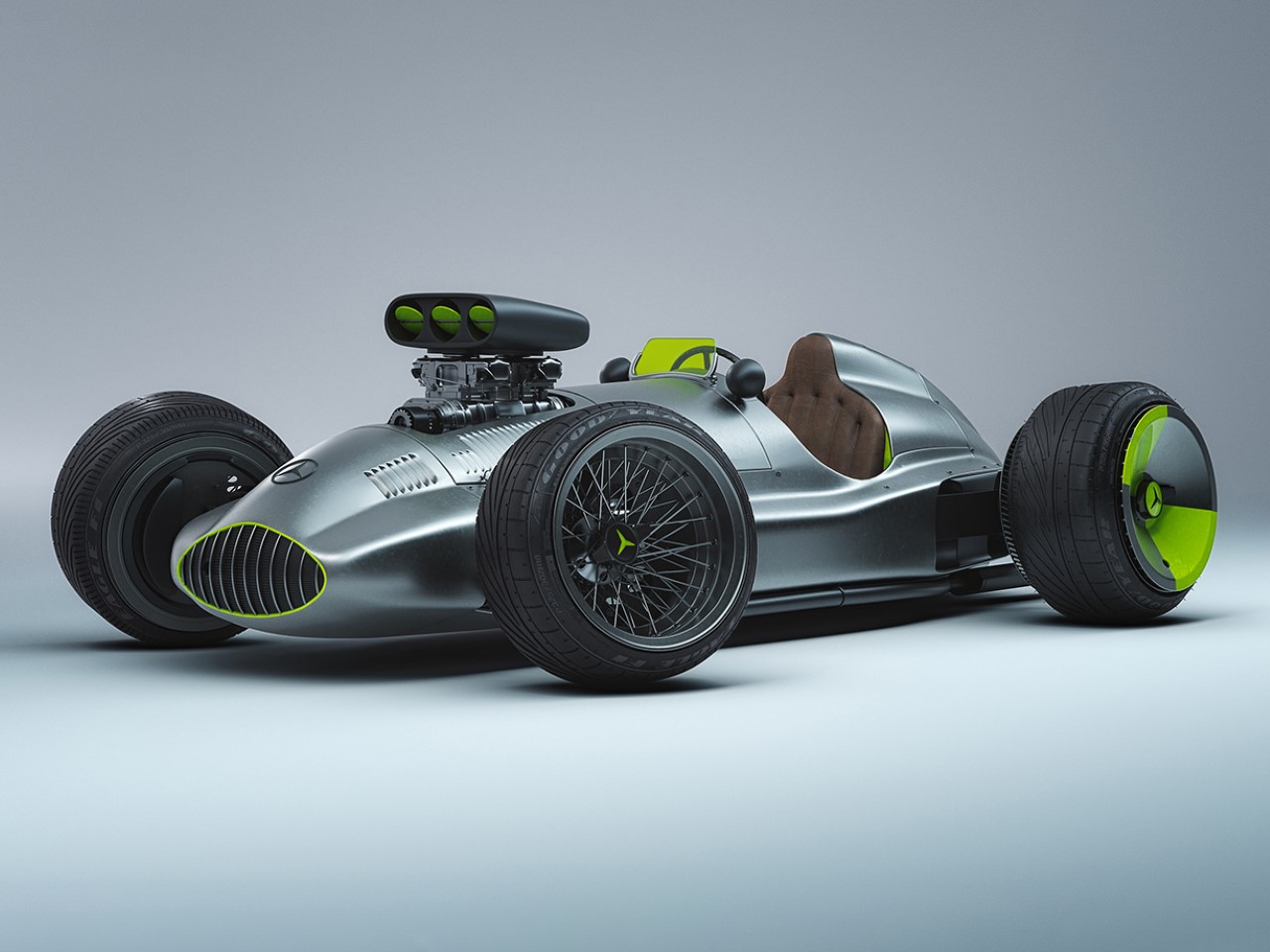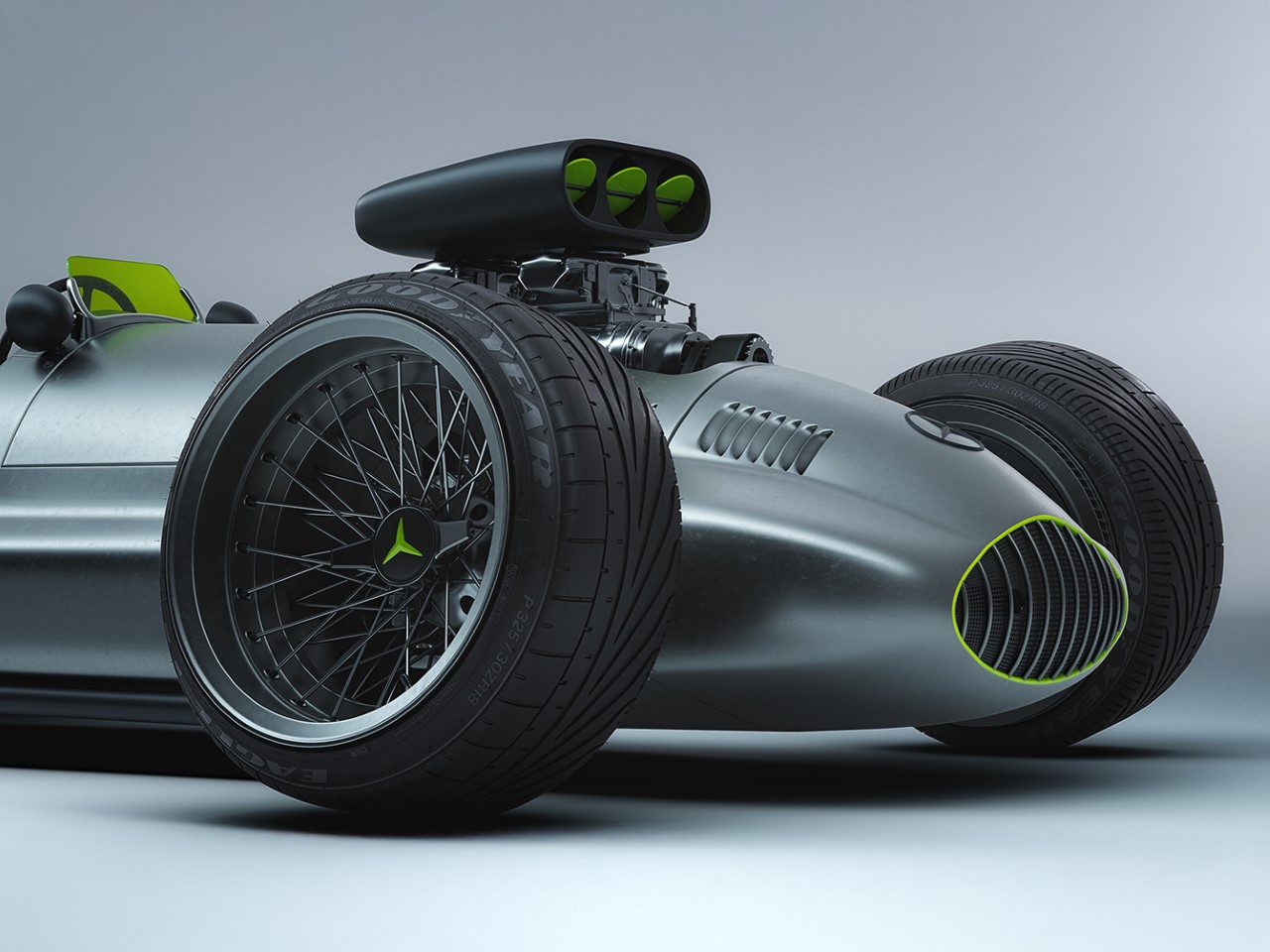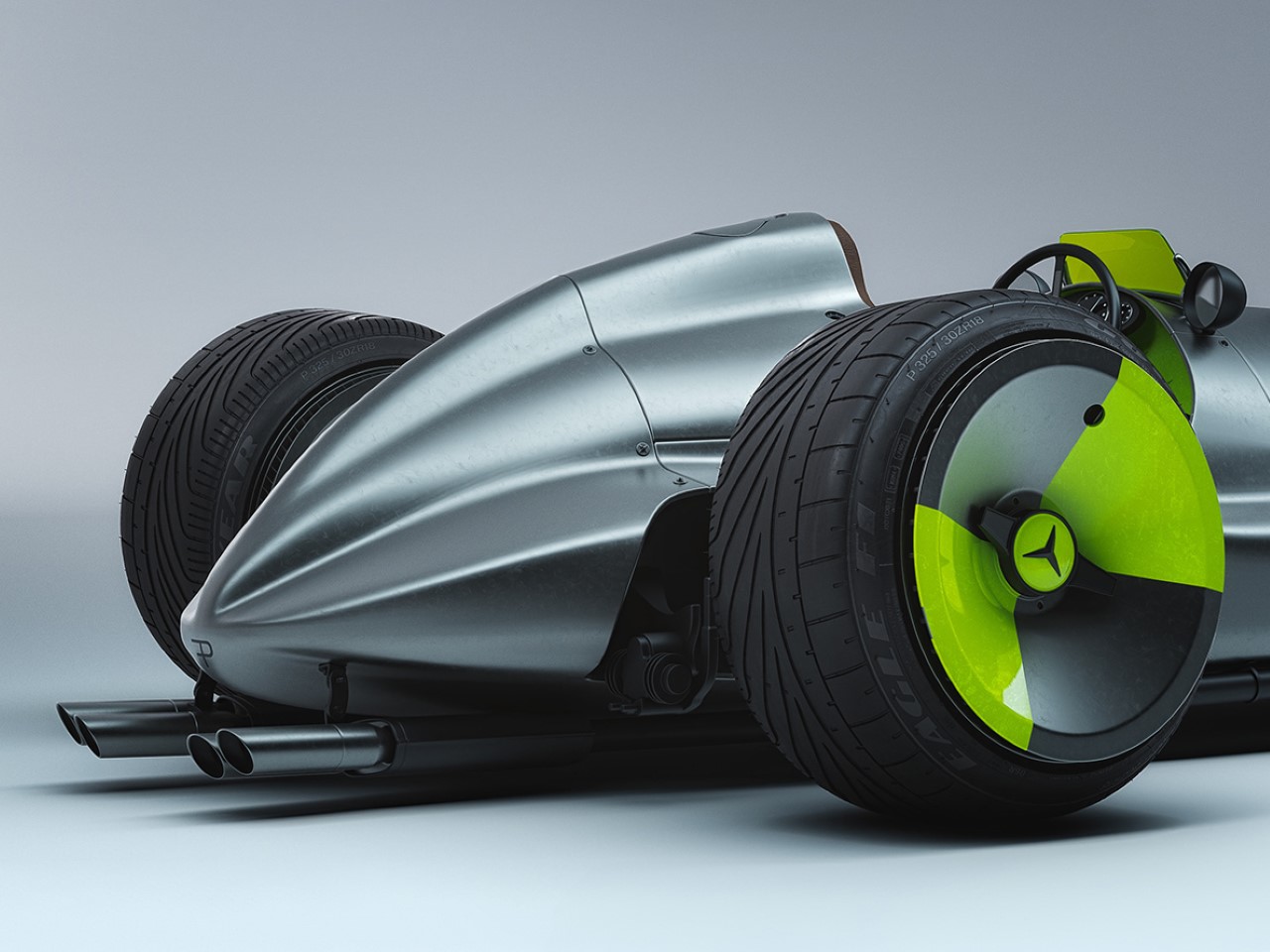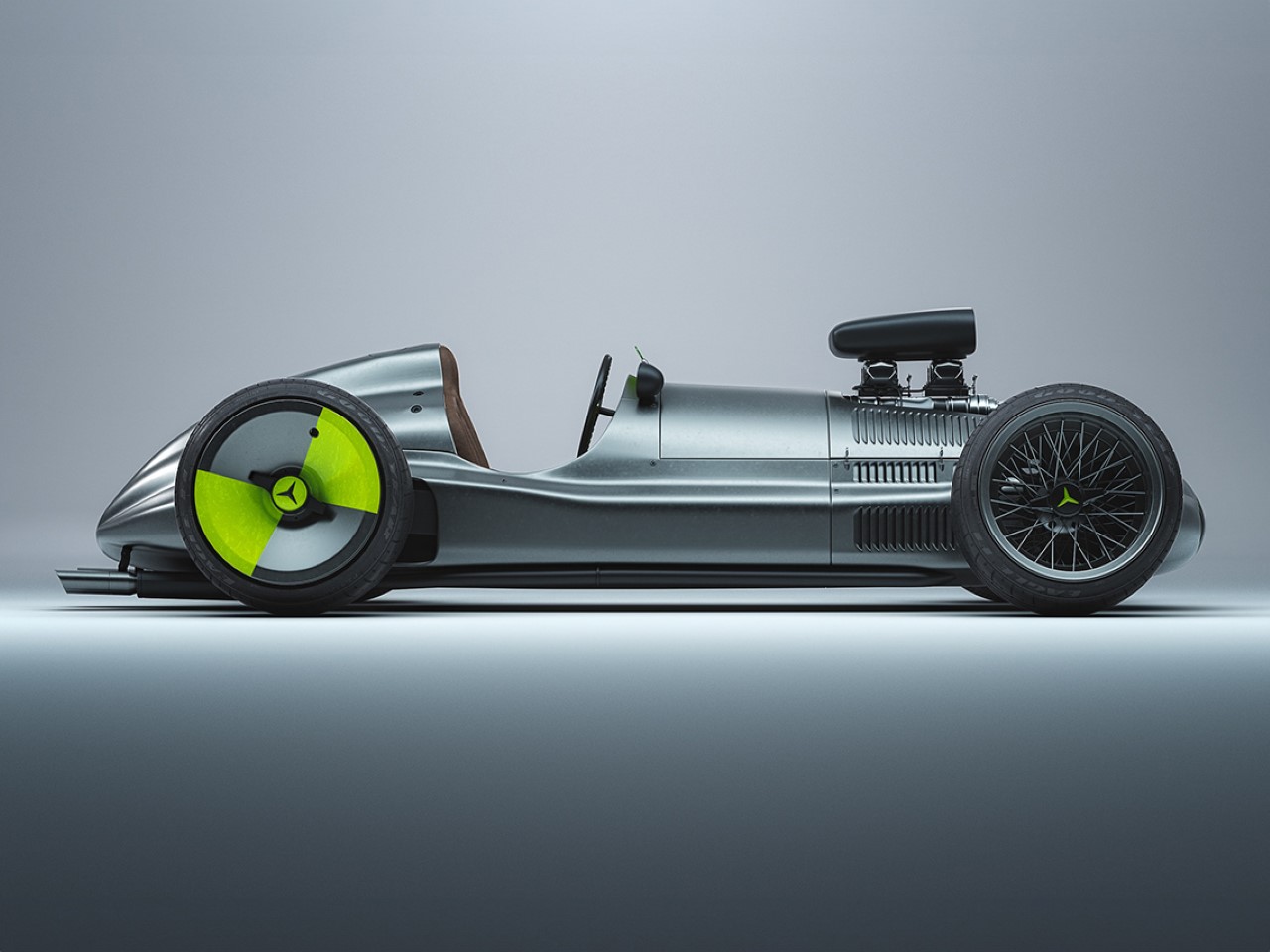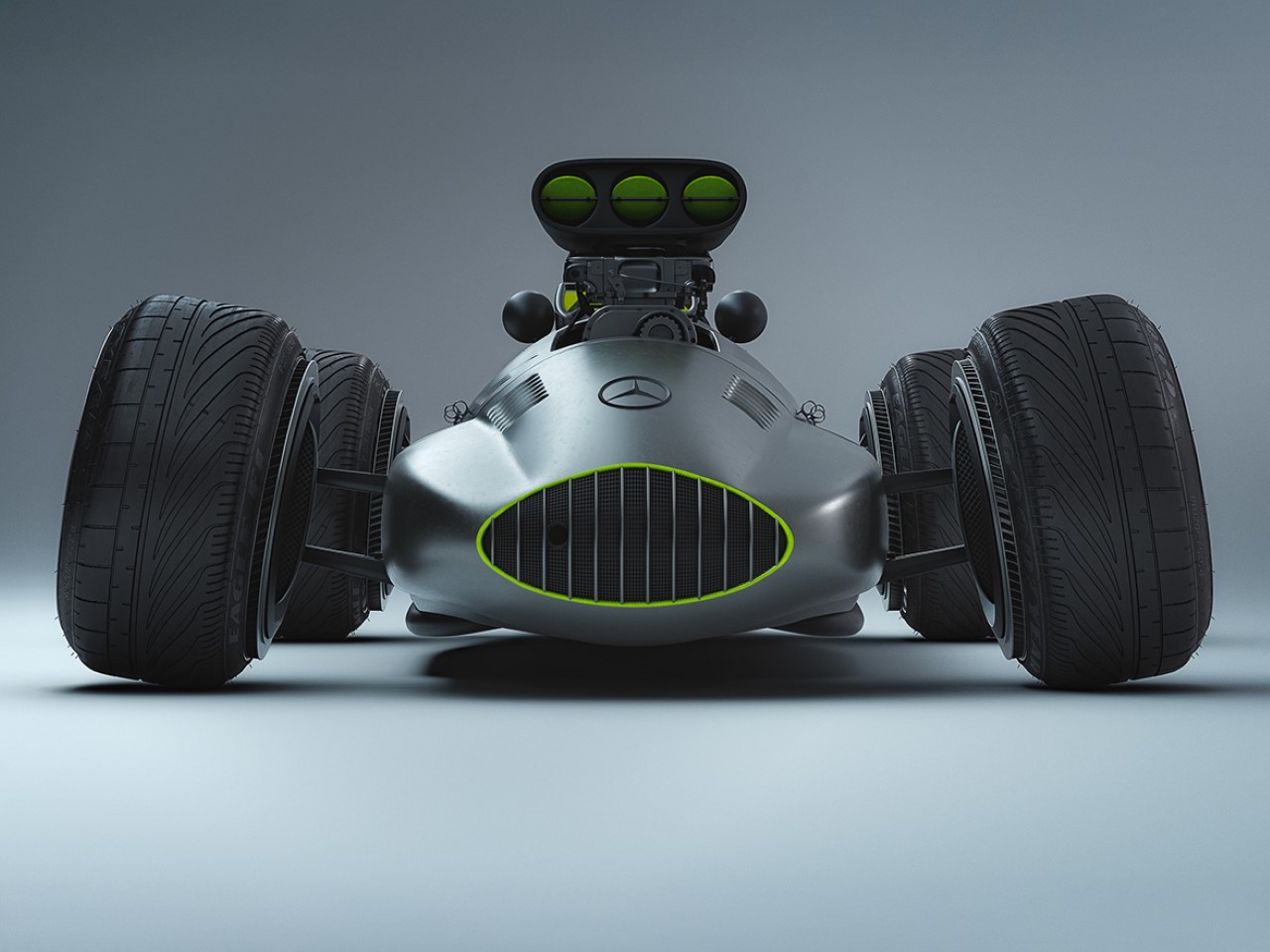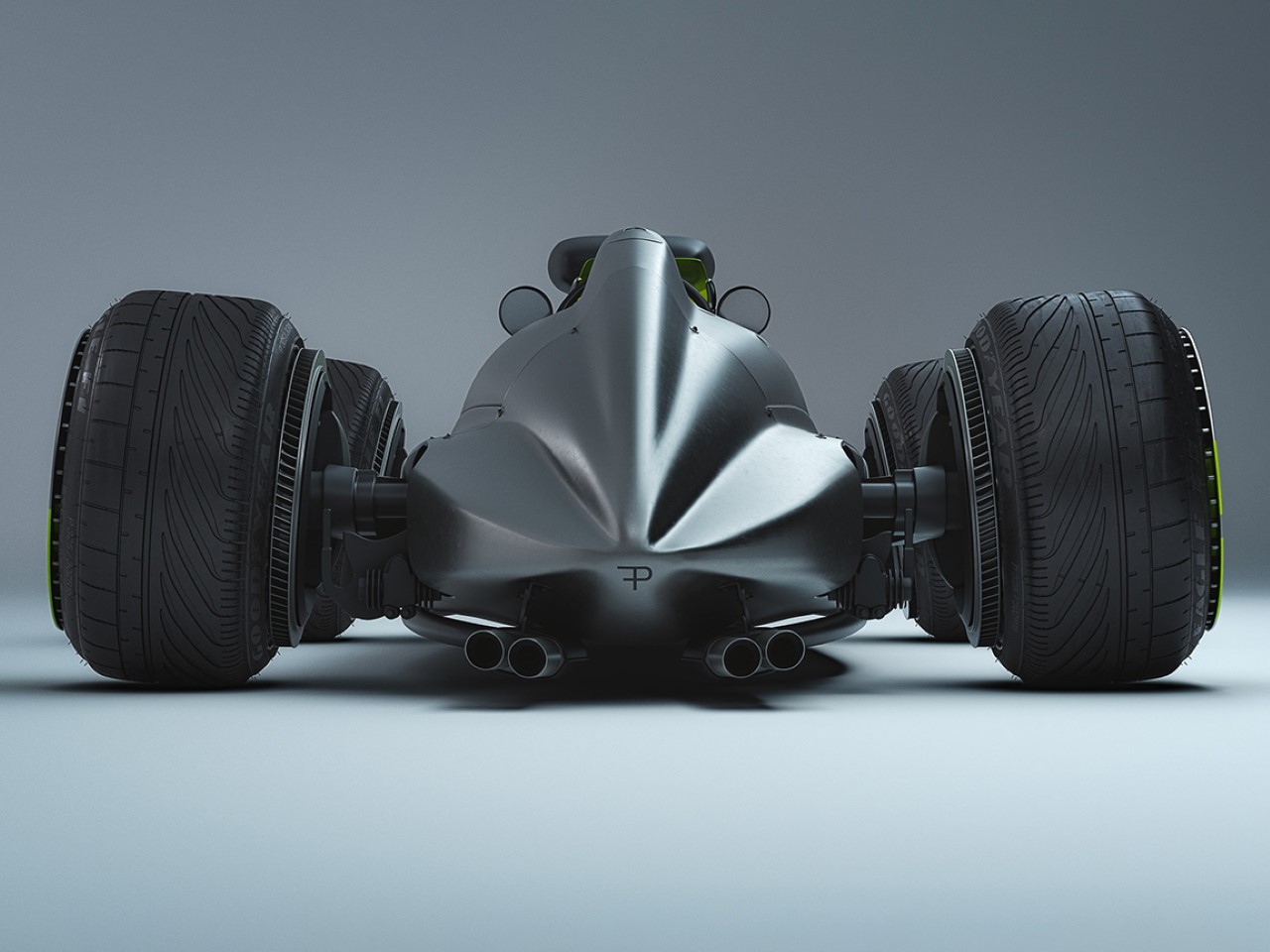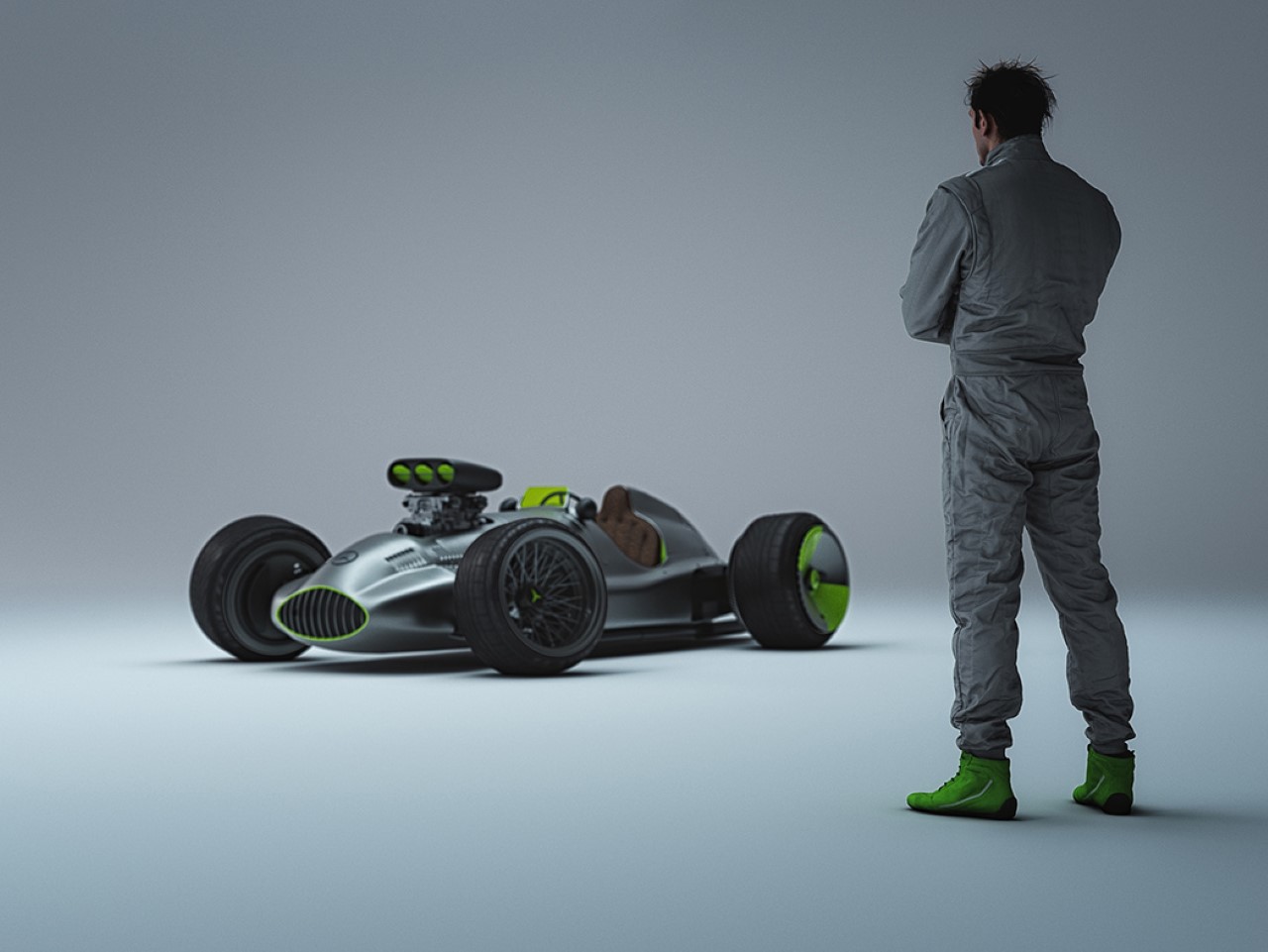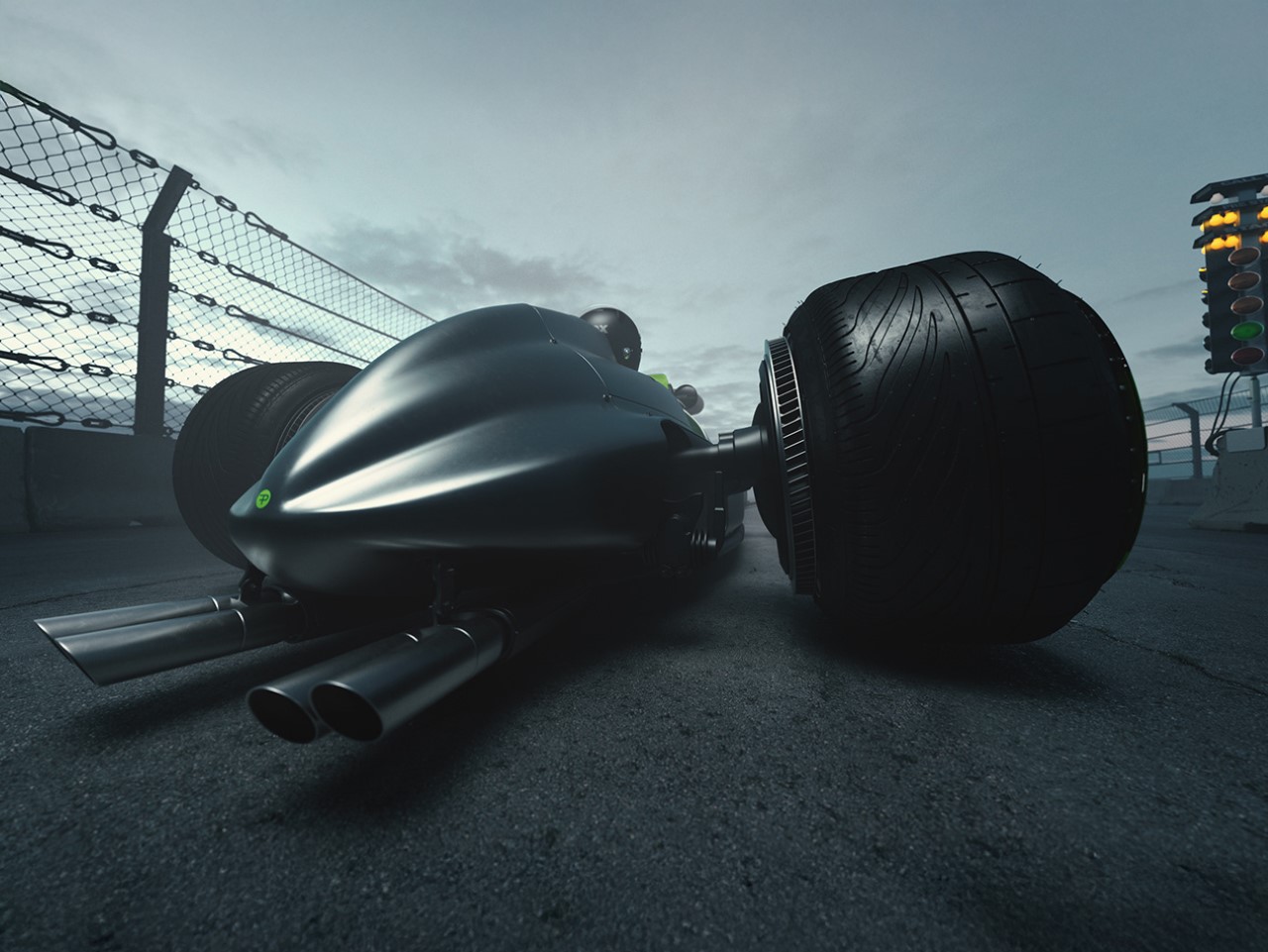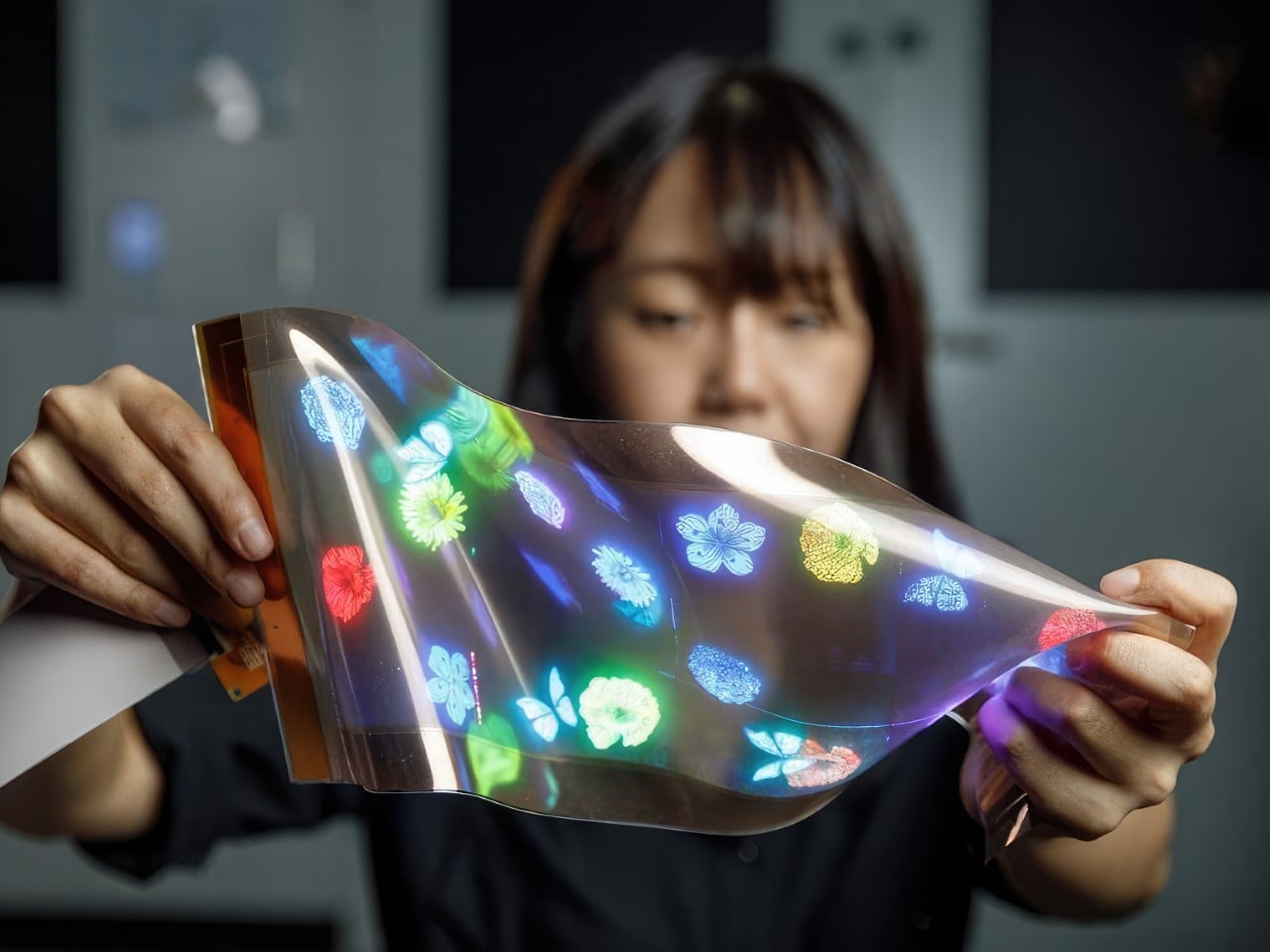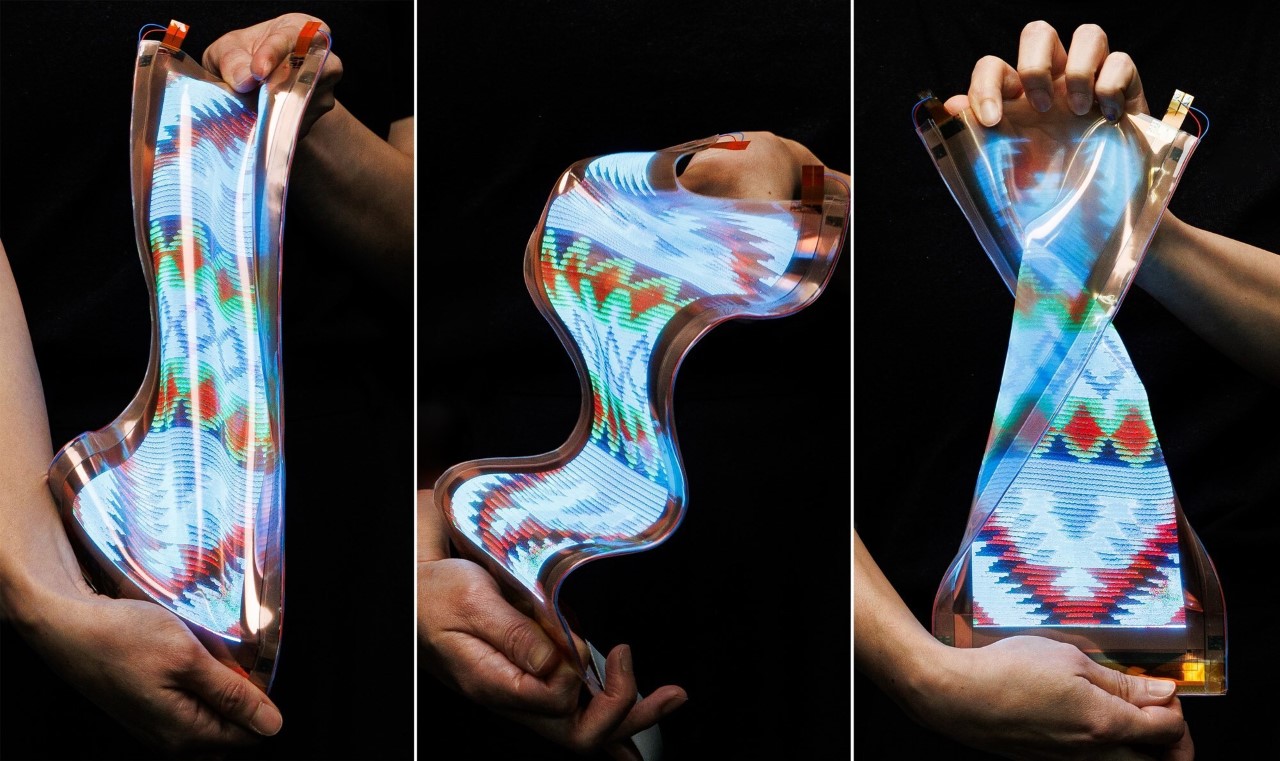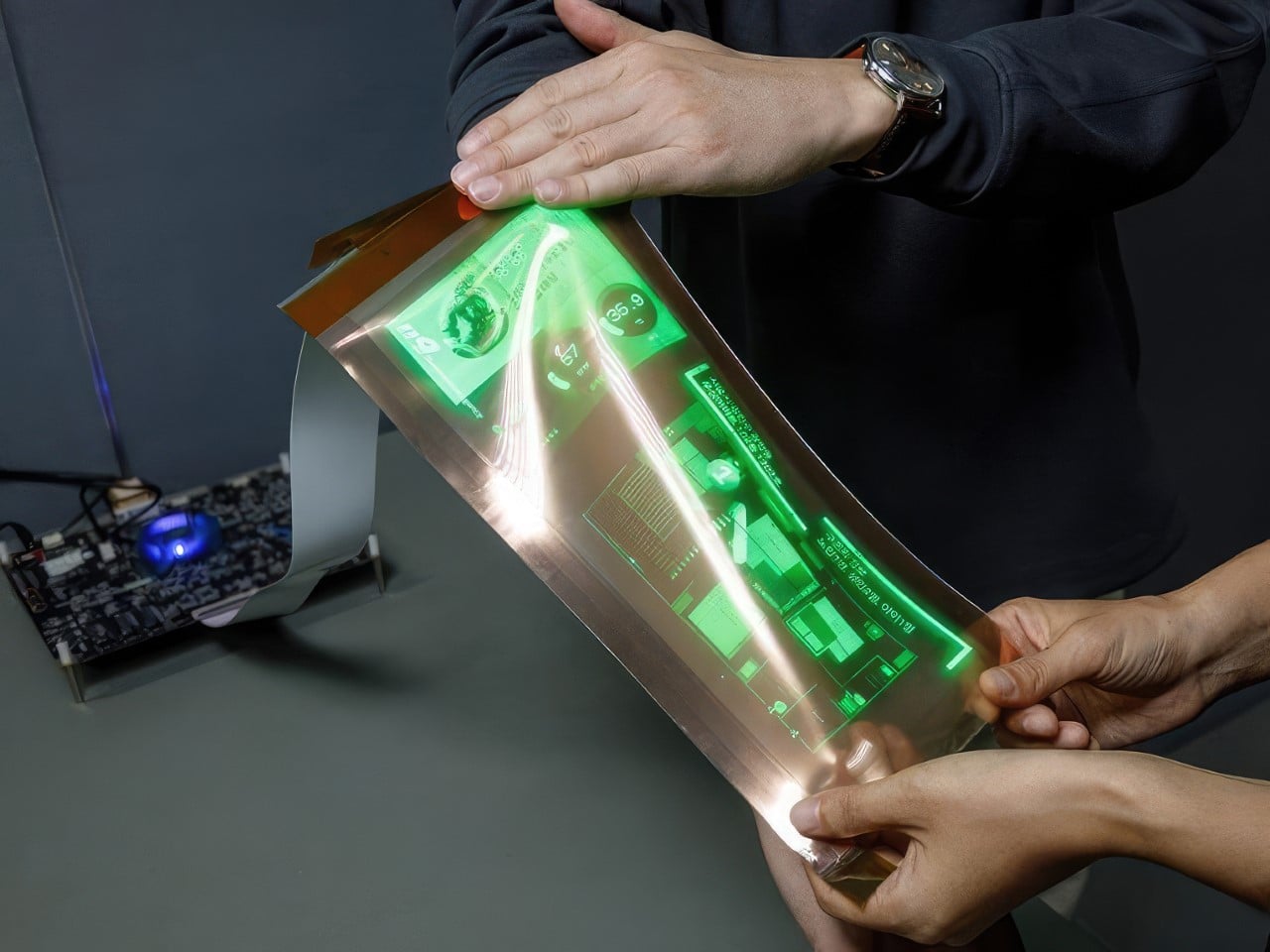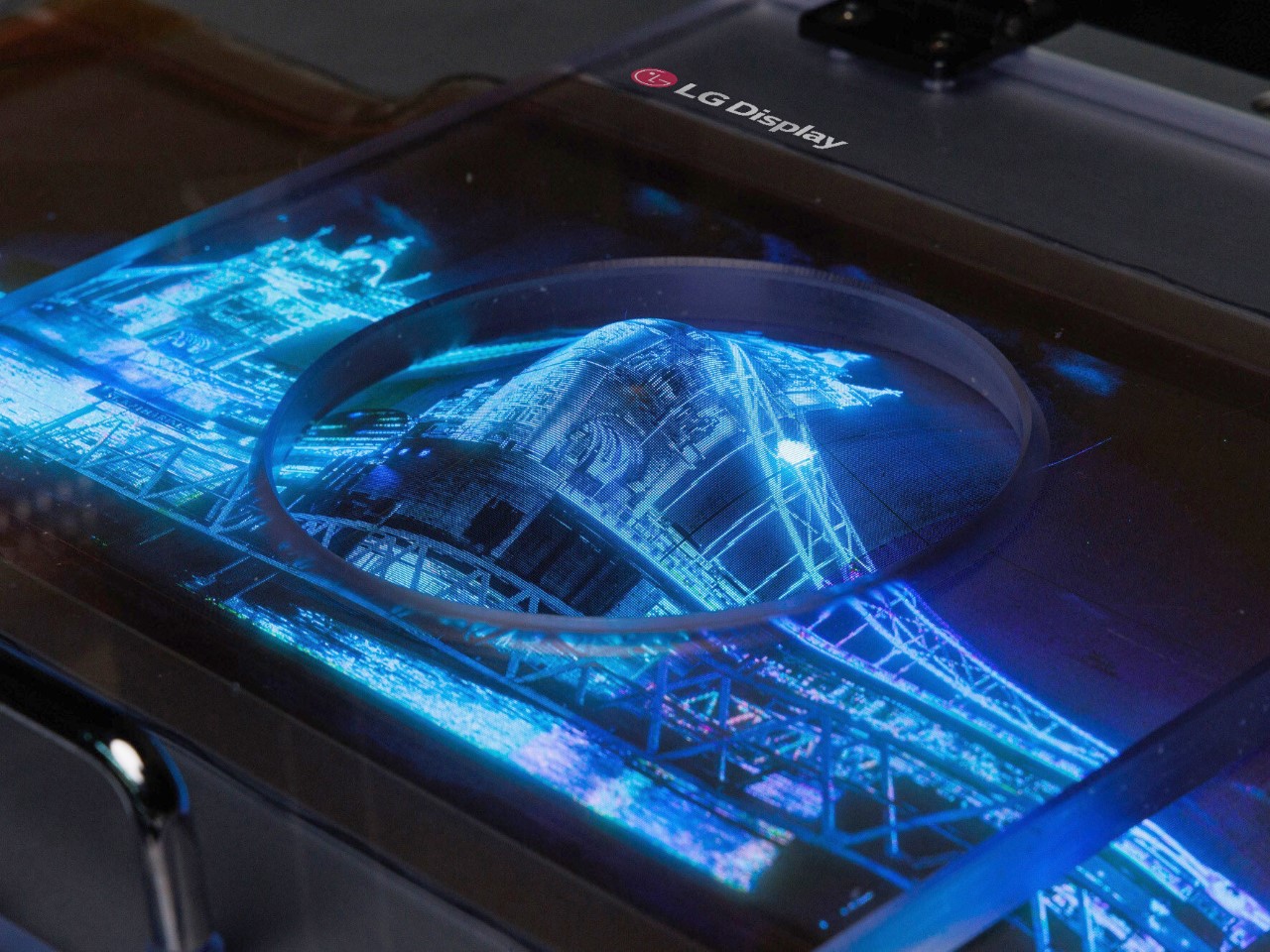Here’s a clock that does more than keep time; the RGB Tube Clock merges vintage nostalgia with cutting-edge tech in a piece that’s part décor, part high-precision gadget. Inspired by the look of classic Nixie tubes, it mimics that retro display style but swaps out the fragile gas-filled tubes for a modern RGB spectrum. It’s a nod to mid-century tech with a fresh, colorful twist, offering the vibe of a Nixie clock without the maintenance.
The way the RGB Tube Clock works is by relying on the edge-lighting property of clear plastics like acrylic. The numbers are etched onto acrylic sheet, and as soon as a light is shone through the edge, the number glows brightly, almost as if it were illuminated. The clock has 6 channels, two for hours, minutes, and seconds, and each channel has 10 acrylic sheets stacked one behind another – one sheet for each number. The clock works by controlling which LEDs shine on which sheet, illuminating that individual number in a highly controlled fashion.
Designer: Breza
Click Here to Buy Now: $71.99 $89.99 (20% off, use coupon code “Yanko” at checkout). Hurry, deal ends in 48-hours!
Nixie tubes worked in a similar way, heating up wires that were shaped in individual numbers. However, while nixie tubes went out of fashion around the fall of the Soviet Union, they slowly became more of a historical relic (and an expensive one at that). This acrylic workaround feels like a hat-tip to that retro display technology, without any of the high power consumption, fragility, or expense. For those nostalgic for old-school Nixie aesthetics or new to the allure, the RGB Tube Clock brings an accessible version with plenty of flair.
If you’re wondering why a 24-hour clock has 10 acrylic sheets in its first channel (since it only goes up till 2), it’s because the RGB Tube Clock doubles as a stopwatch and timer too. If a timer is too tedious for you, the regular clock has an alarm function built-in, allowing you to place the RGB Tube Clock at your bedside and use it as both an alarm clock as well as an ambient night lamp. Thanks to the DS3231 clock chip—a high-precision piece of tech—it’s also reliably accurate, ensuring you stay on schedule down to the second. The clear interface means even these extra features are easy to navigate, whether you’re timing a workout or setting a reminder.
And here’s a fun touch: the clock includes a music spectrum display, so you can watch the lights dance along to your favorite tunes. It’s one of those features you didn’t know you needed until you see it in action, making it as much an interactive décor piece as a timekeeper. Plugging in with a simple USB DC 5V connection, setup is hassle-free—just plug, play, and let it enhance your space.
The clock comes with a fairly minimalist design, thanks to those transparent acrylic sheets that take away from the clock’s visual density. The entire gizmo measures just 10” x 1.8” x 2.75” making it small enough to sit on any tabletop surface. The clock weighs a little over a pound, runs off a USB cord, and can be configured using buttons on the side.
Whether you’re a retro-tech enthusiast or simply appreciate unique, stylish pieces, the RGB Tube Clock stands out. It combines the charm of Nixie tube nostalgia with all the convenience of modern RGB tech, reimagining what a clock can be in a way that’s visually stunning, interactive, and wonderfully functional.
Click Here to Buy Now: $71.99 $89.99 (20% off, use coupon code “Yanko” at checkout). Hurry, deal ends in 48-hours!
The post The RGB Tube Clock Brings Nixie Nostalgia to a New Generation – Without the Fragility first appeared on Yanko Design.
